| Hollywoodland | Jul 31 2023 |

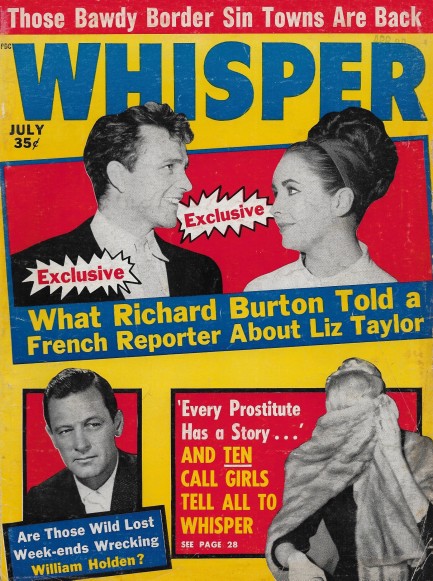
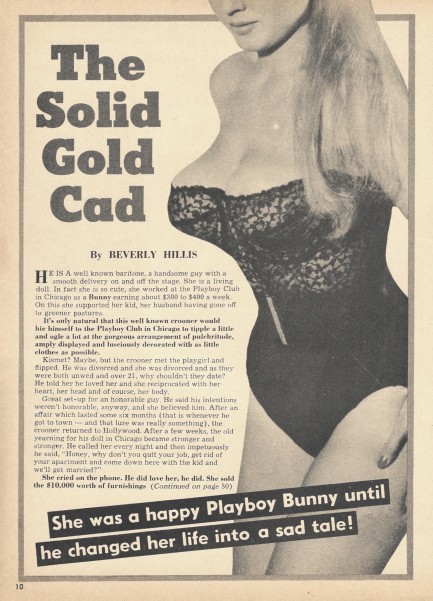
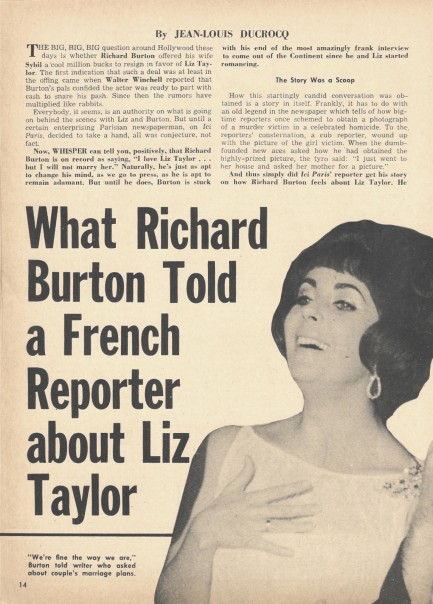
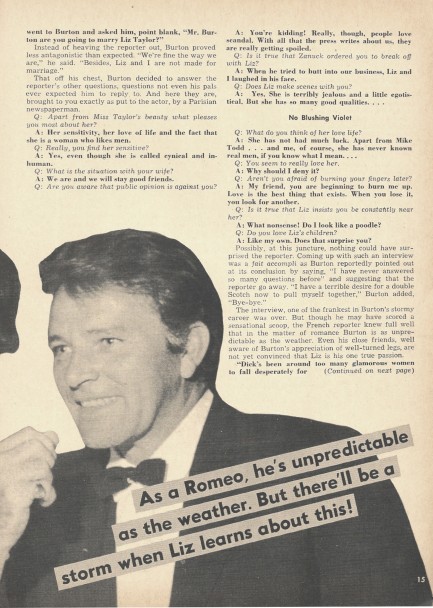
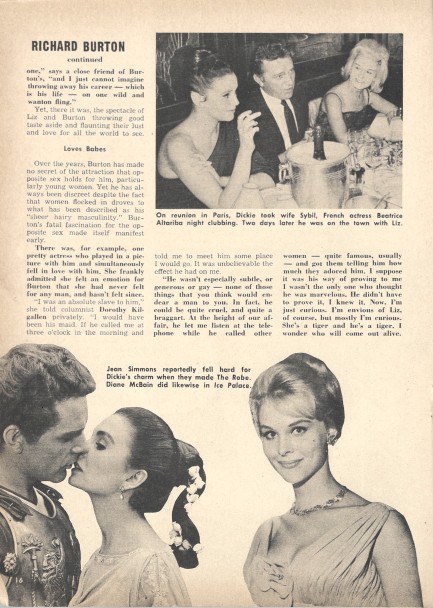
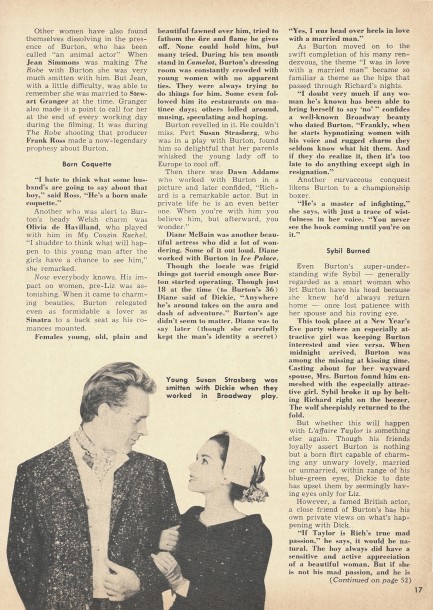
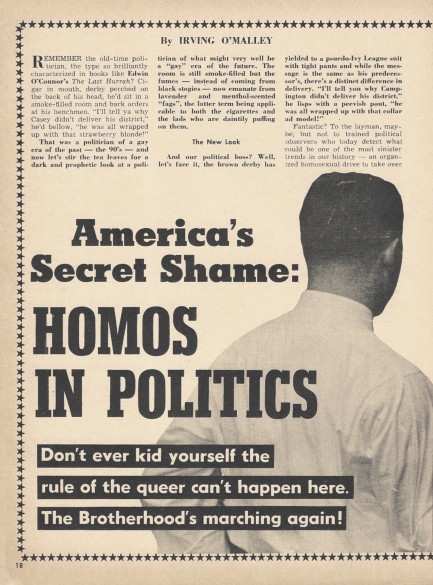
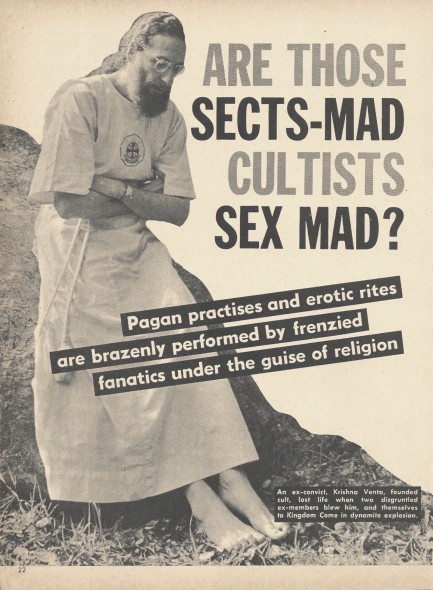
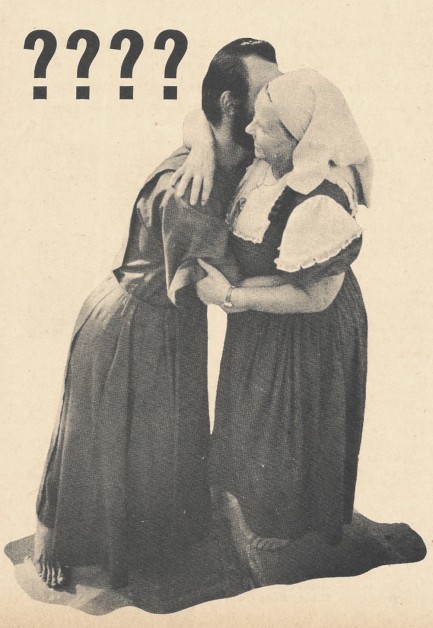

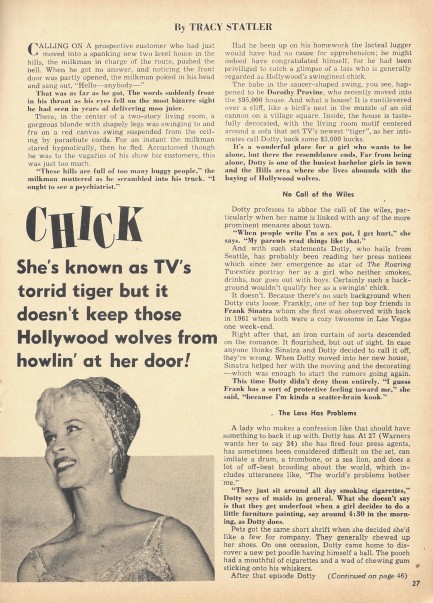
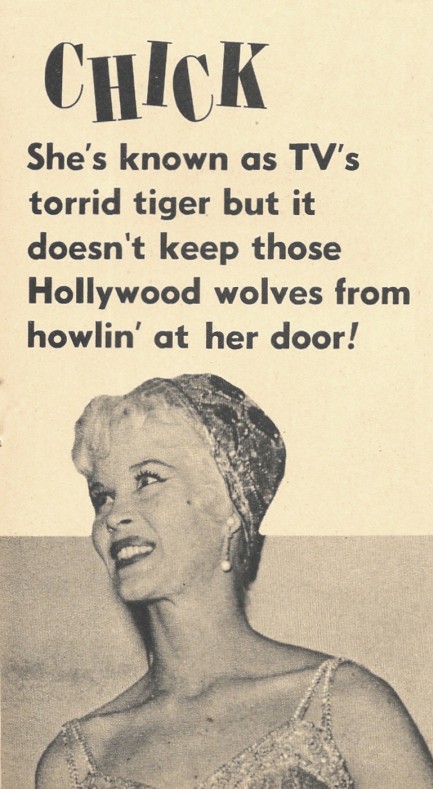
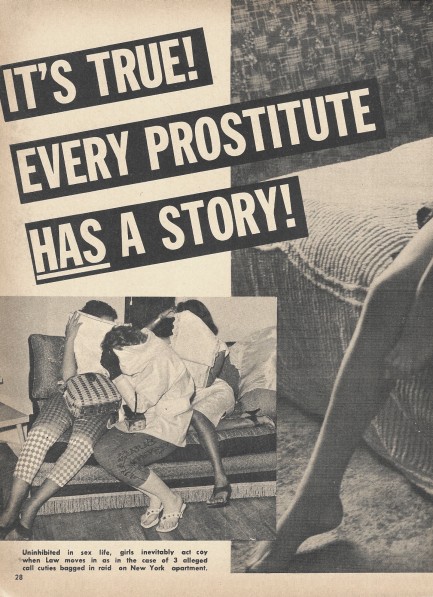
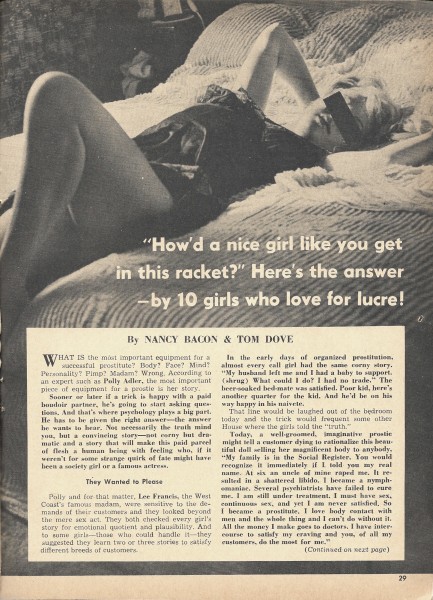
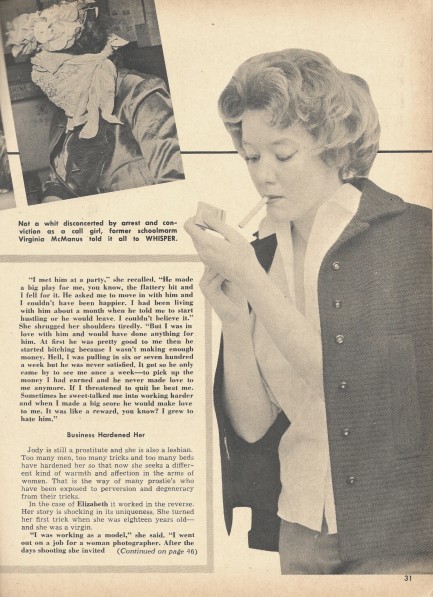
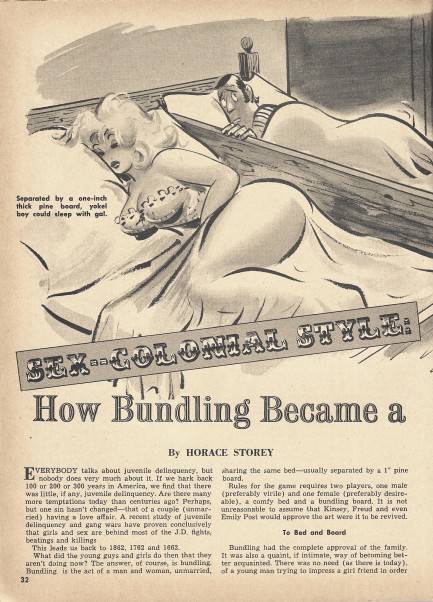
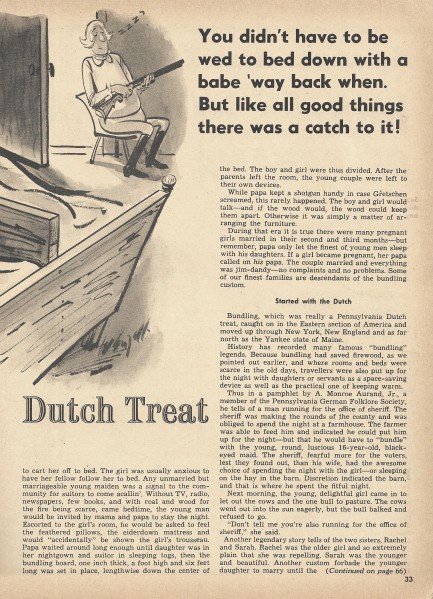
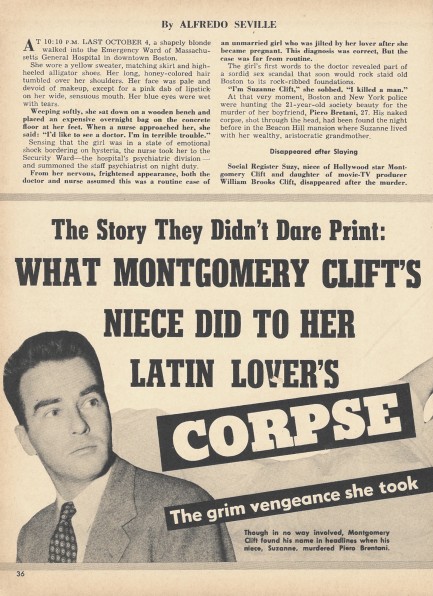
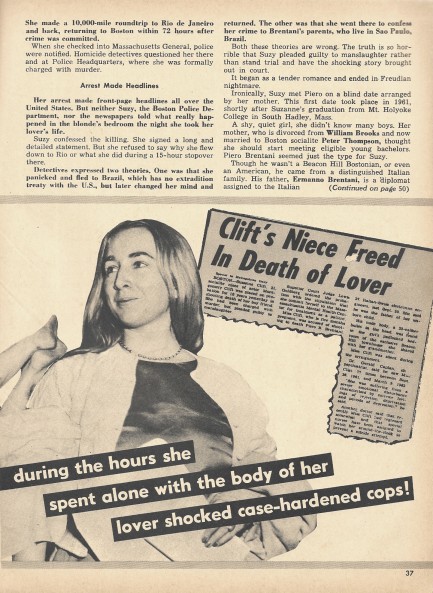
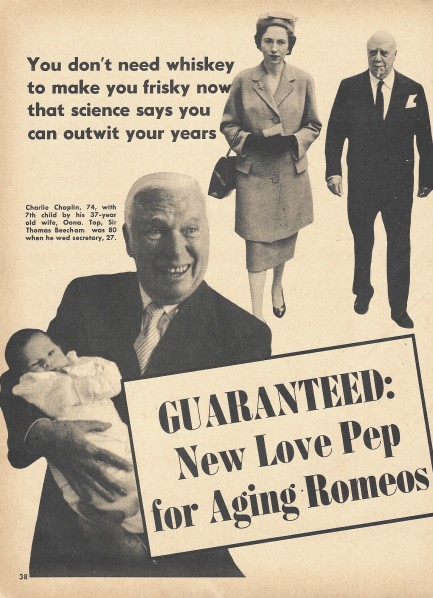
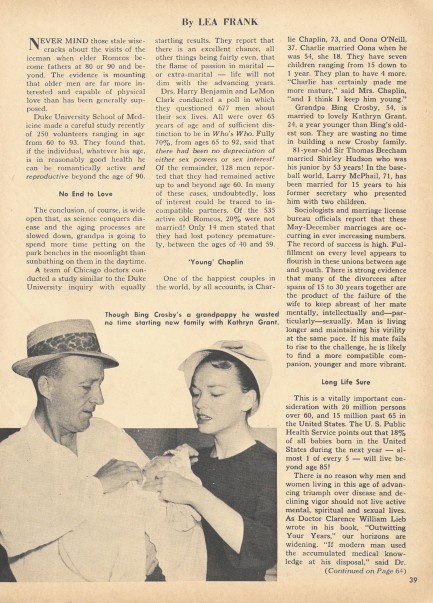
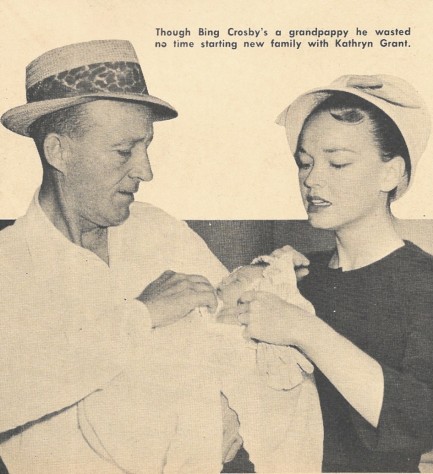
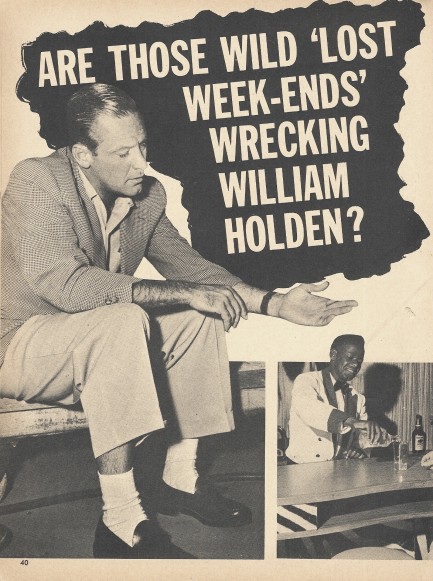
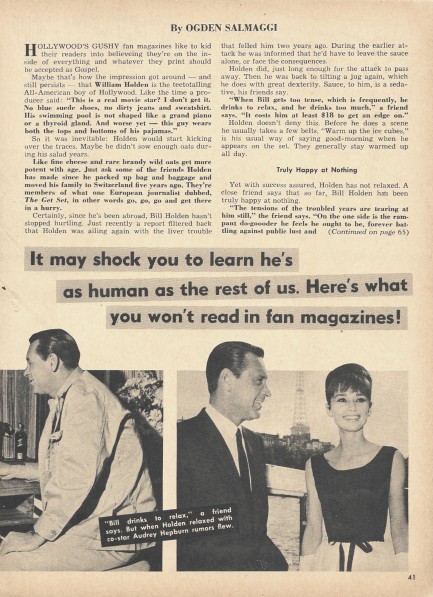
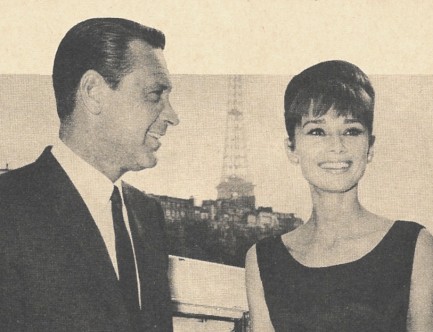
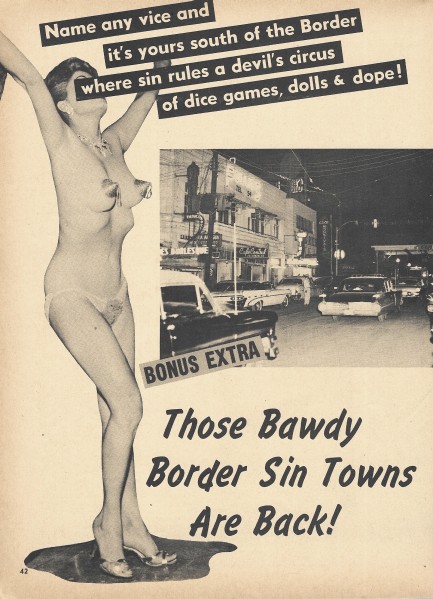
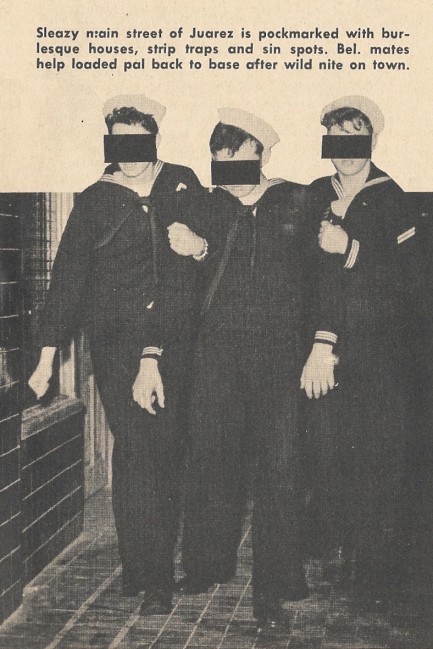
Above are some scans from an issue of the tabloid Whisper published this month in 1963. We've shared hundreds of tabloids over the years, and we always marvel at them. How would you describe the compulsive need to know what's going on in other people's lives? Is it a from of comparison? Is it schadenfreude? Is it envy? The American Psychological Association calls it natural behavior stemming from the fact that humans are social animals curious about what's going on around them. It's why, according to the APA, we gossip about friends and neighbors.
| Hollywoodland | Sep 10 2022 |

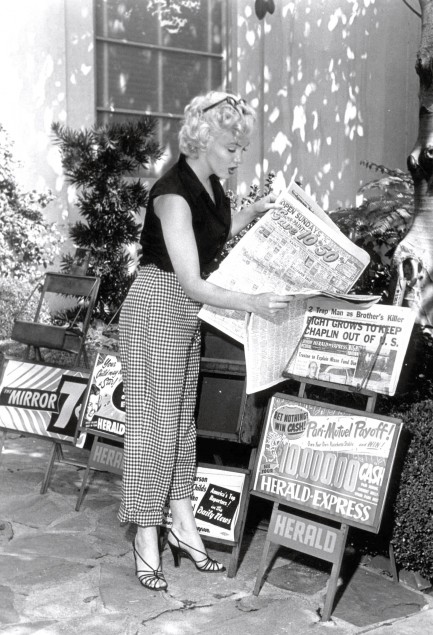
Philippe Halsman shot this sly commentary on fame featuring one of the most famous women in America, Marilyn Monroe, as his subject. She checks out a newspaper, and next to her you can see machines for the afternoon tabloids Mirror, Daily News, and Herald-Express, the latter of which is a publication we've mined often for historical crime photos. In that issue the front page says, “Fight Grows to Keep Chaplin Out of U.S.,” a headline that dates the photo to sometime in late 1952. Why was there a fight? People had been led to believe Chaplin was a communist theat to America for saying things like he wanted every person to have a roof over their heads. He wouldn't return to the U.S. for twenty years. So, the tabloids weren't all about Marilyn every issue. Just mostly. Even gossips need a little variety.
| Hollywoodland | Nov 29 2021 |

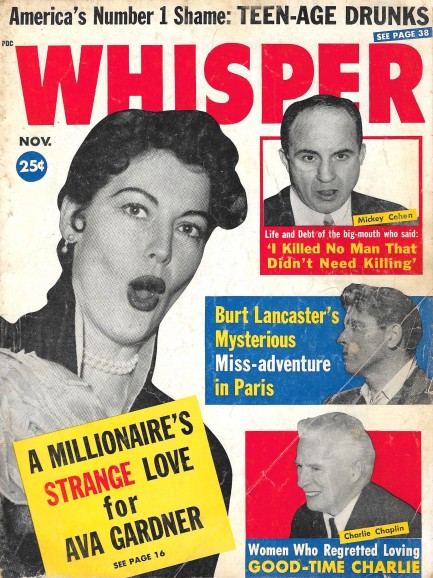
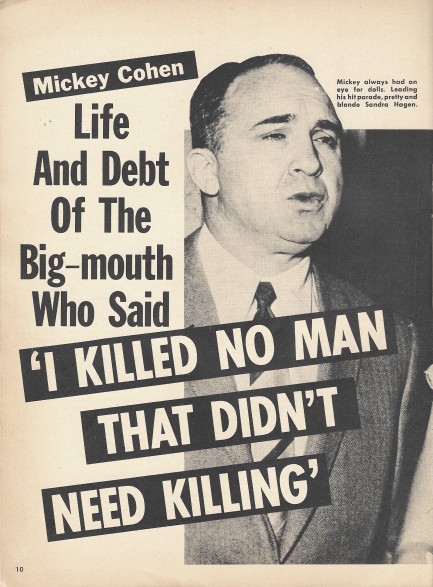
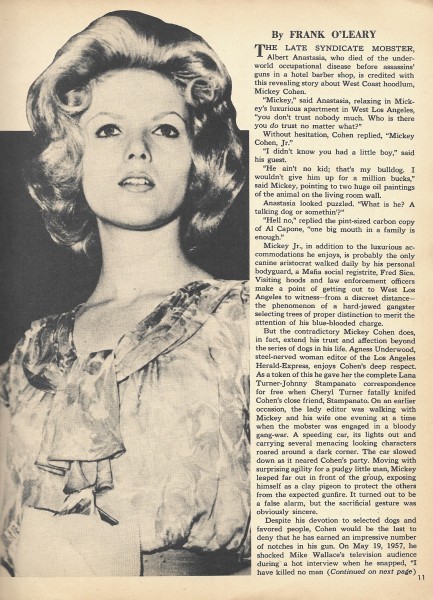
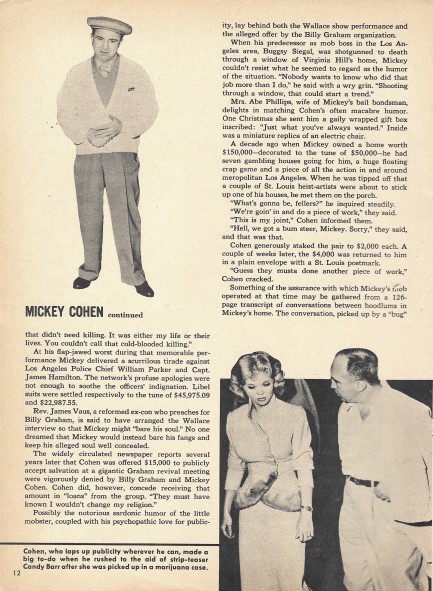
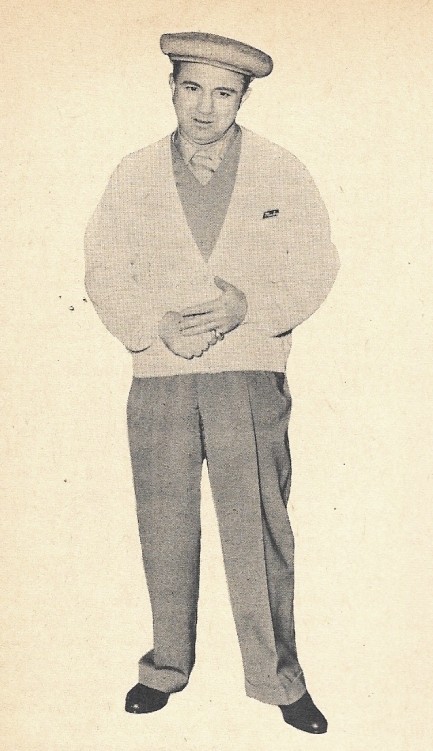
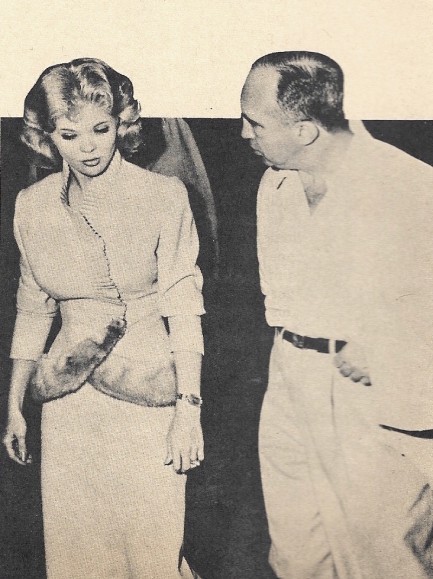
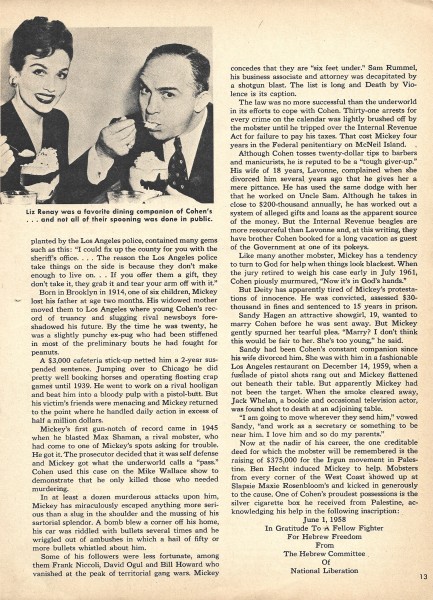
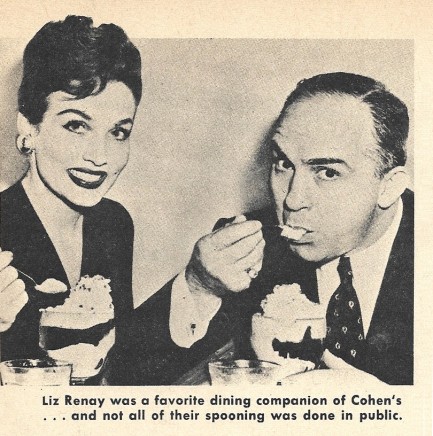
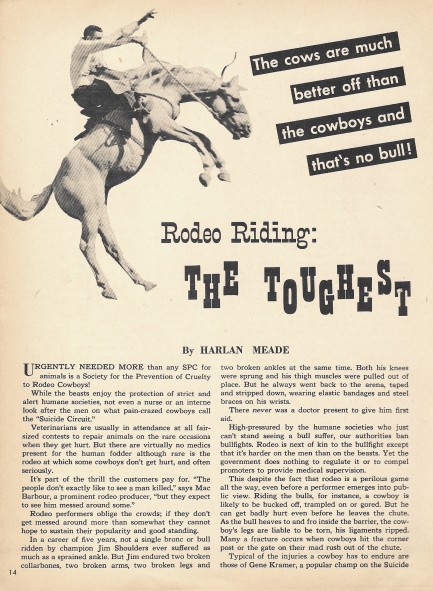
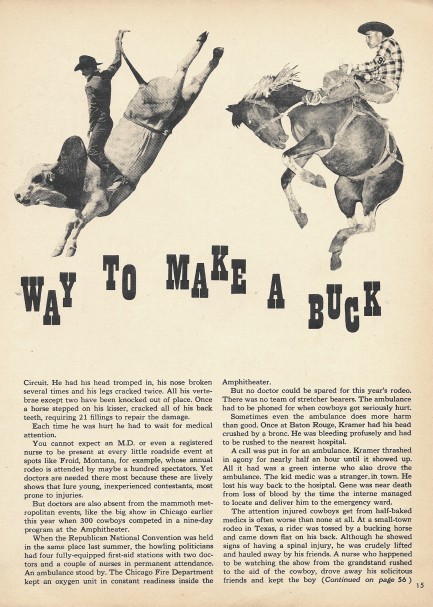
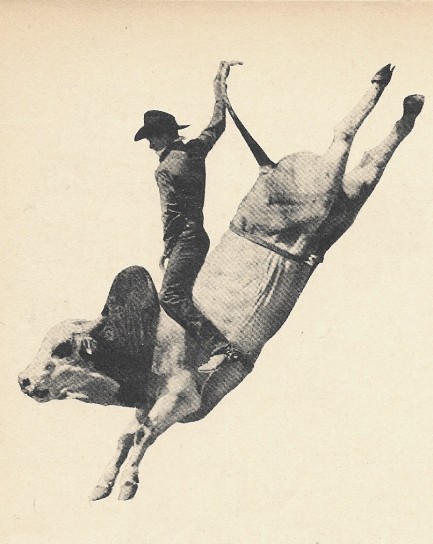
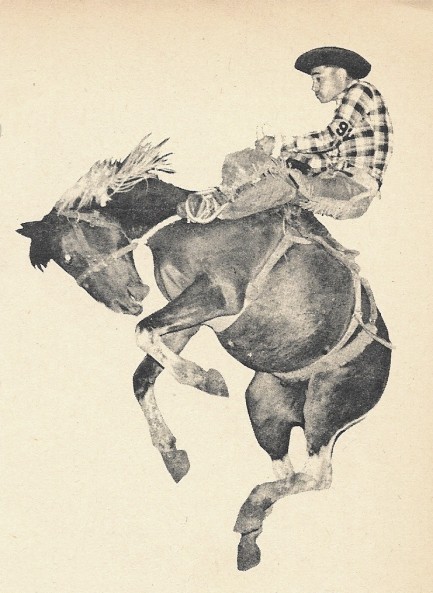
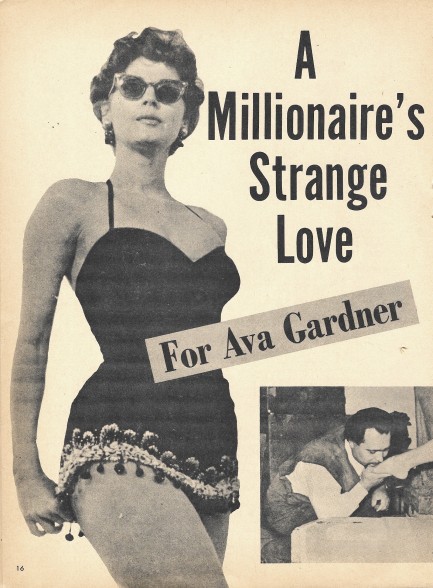
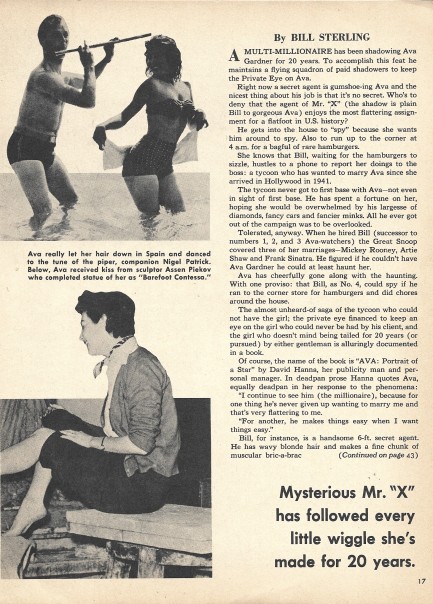
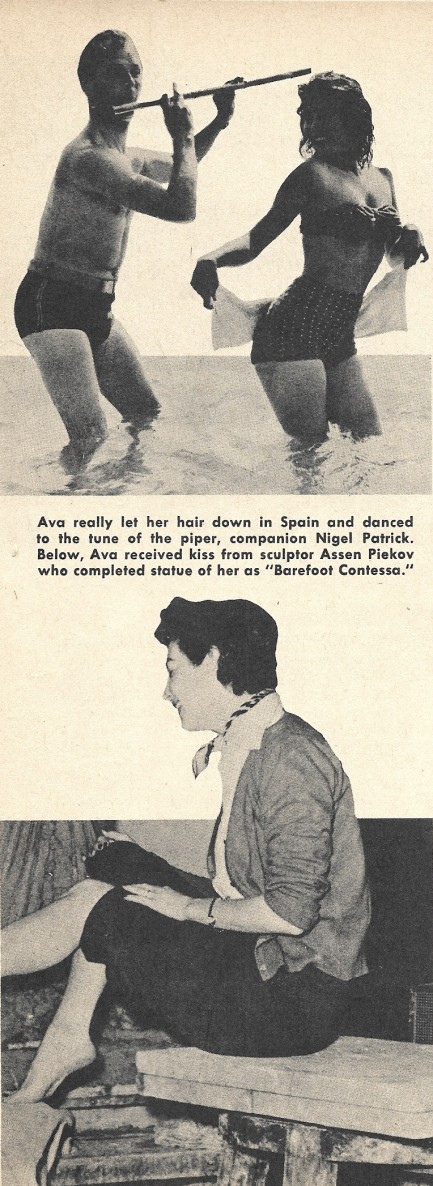
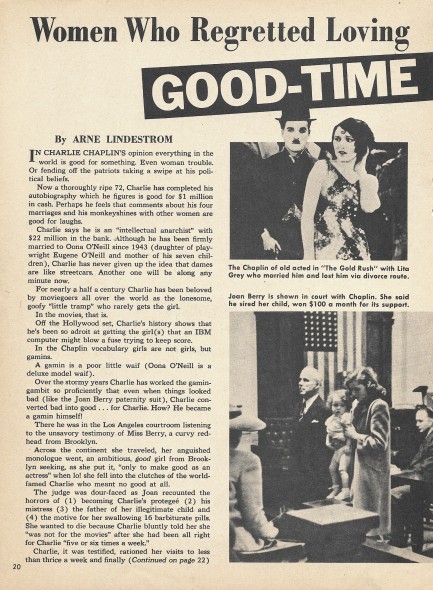
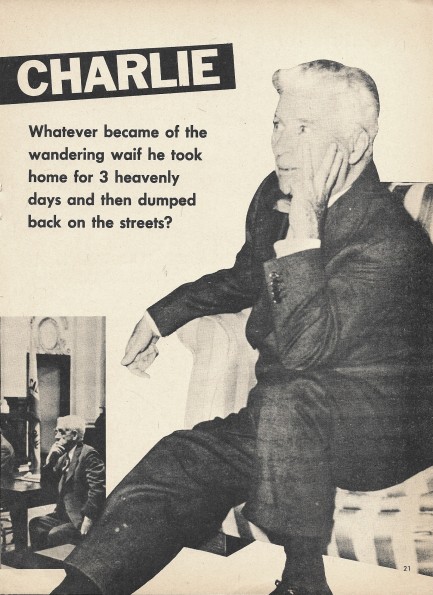
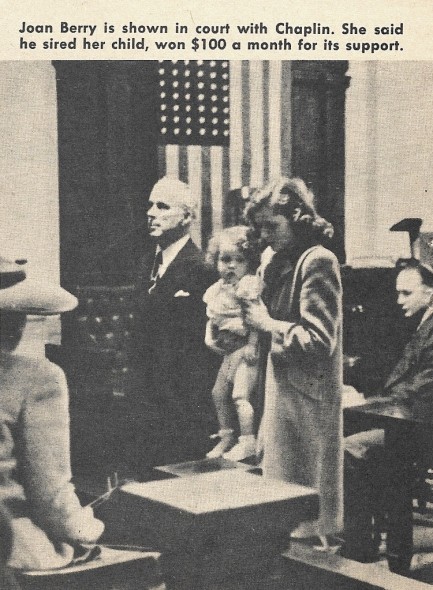
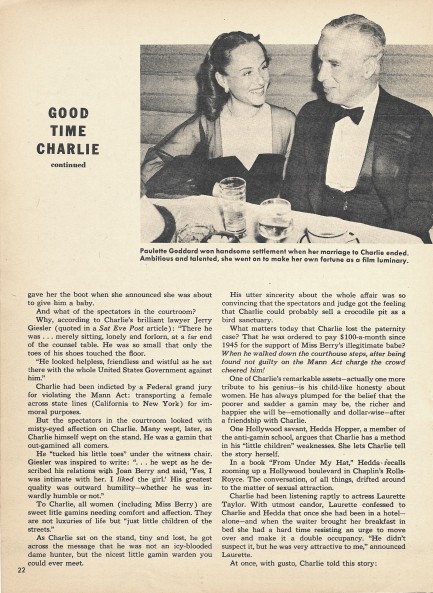
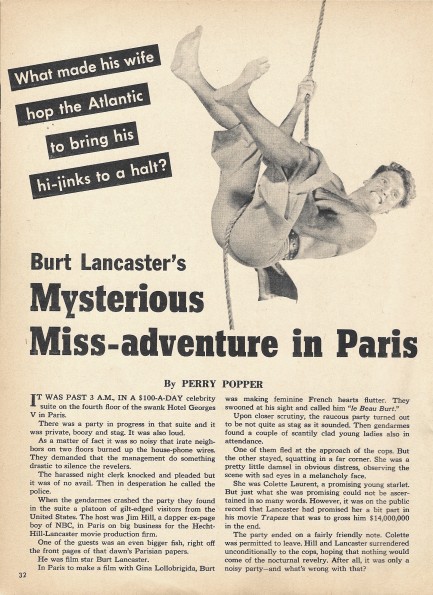
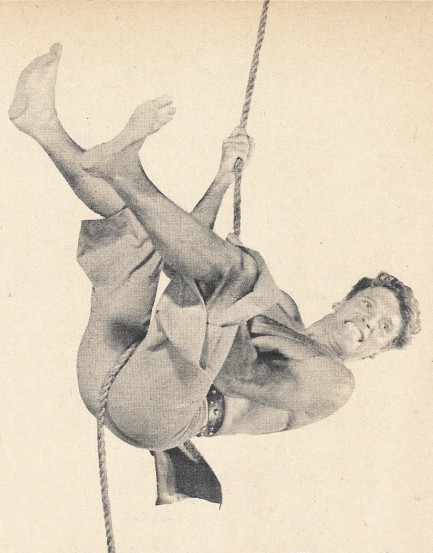
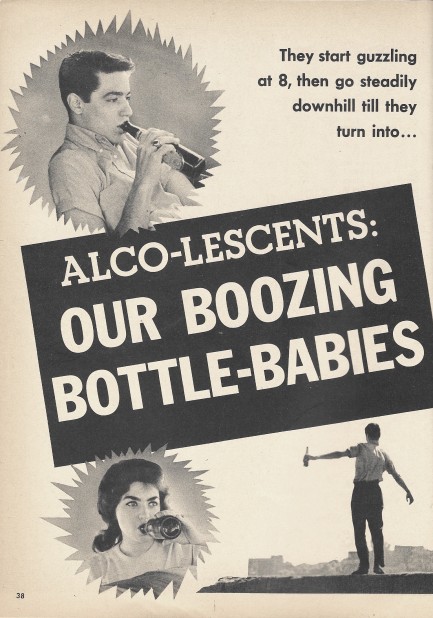
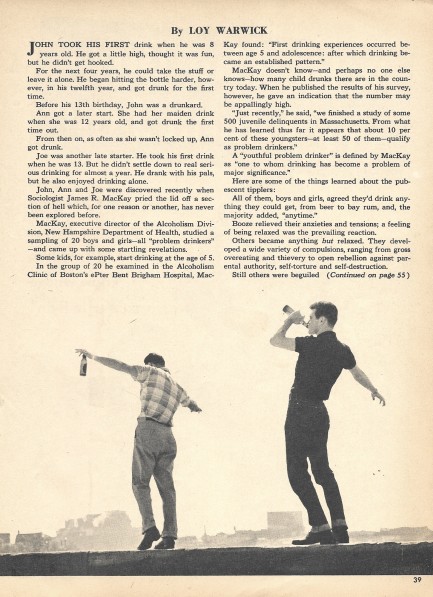
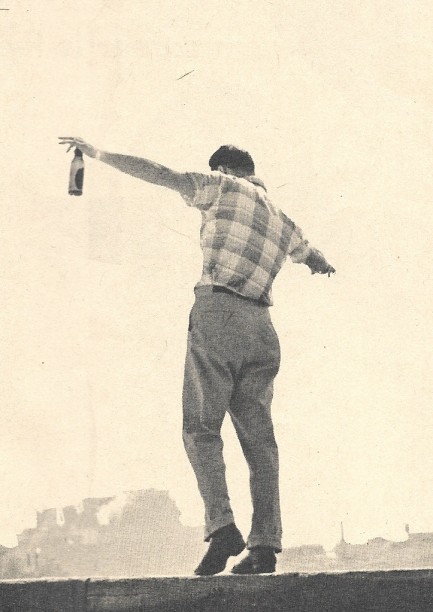
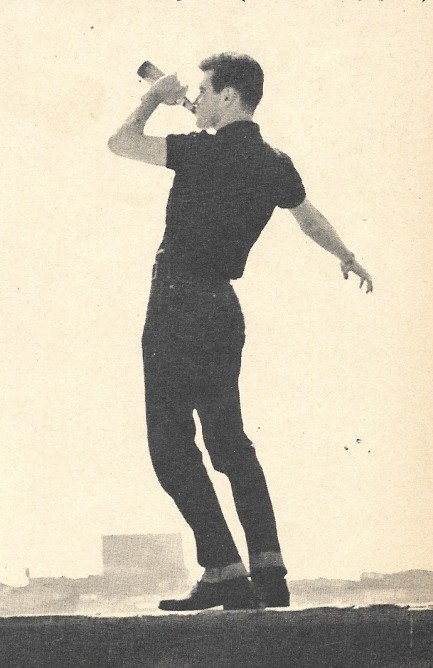
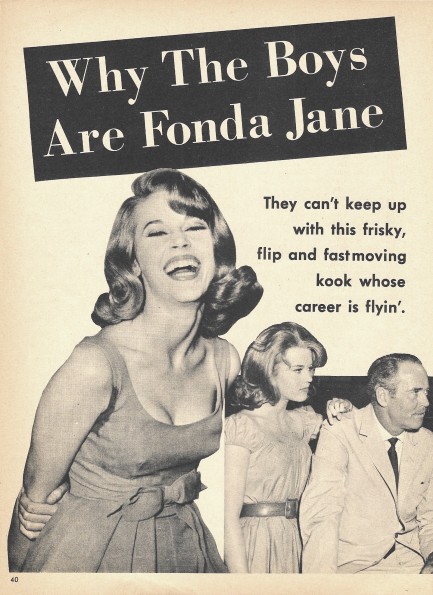
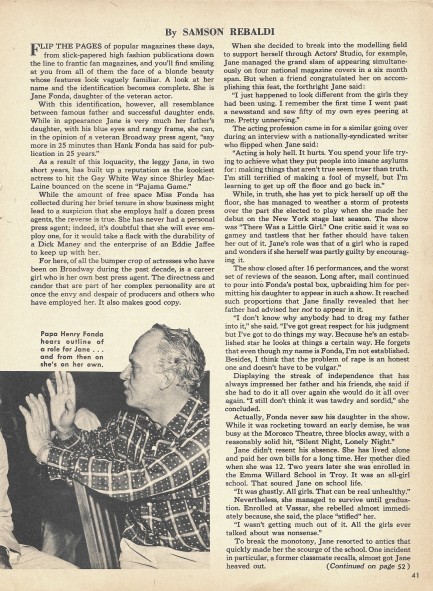
| Intl. Notebook | Aug 26 2021 |

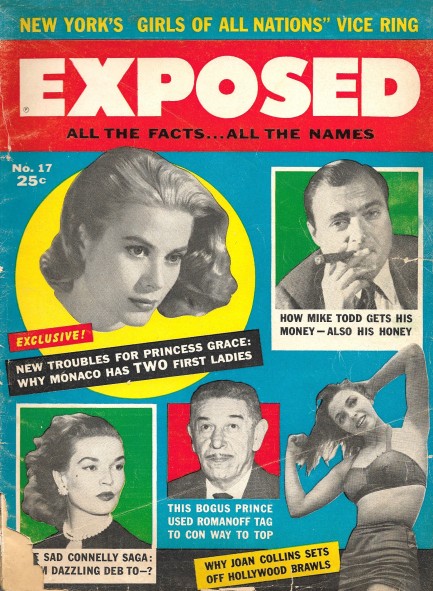
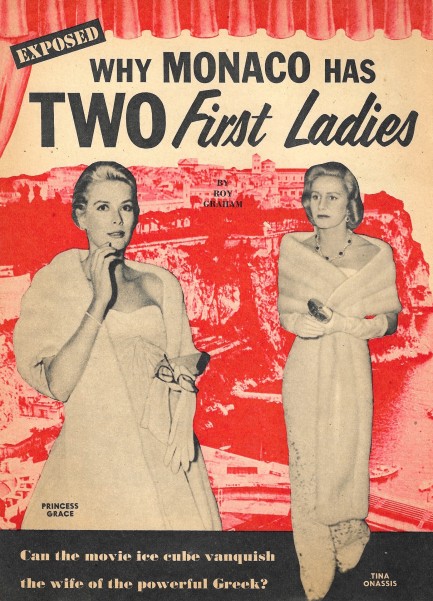
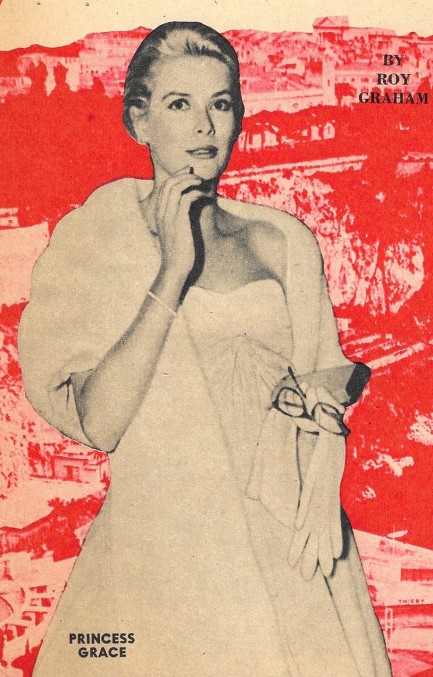
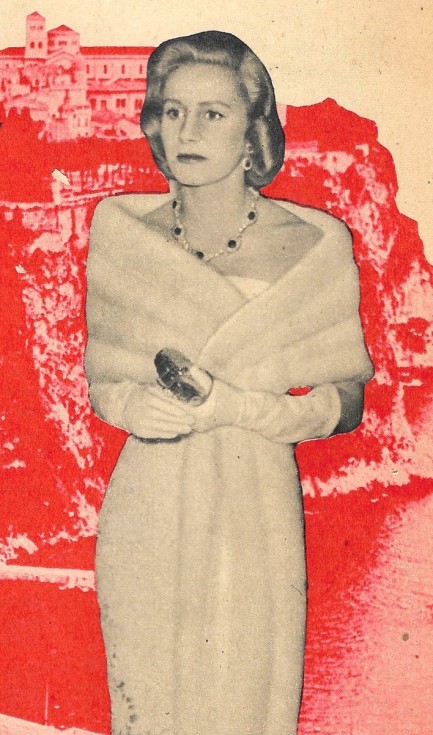
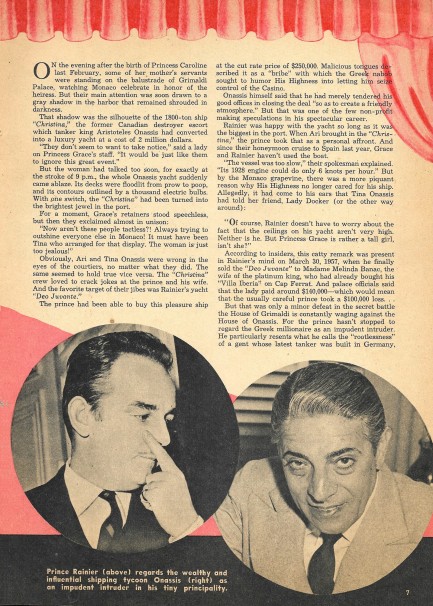
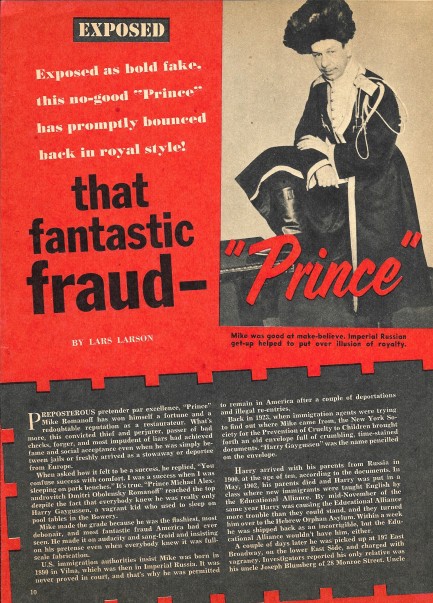
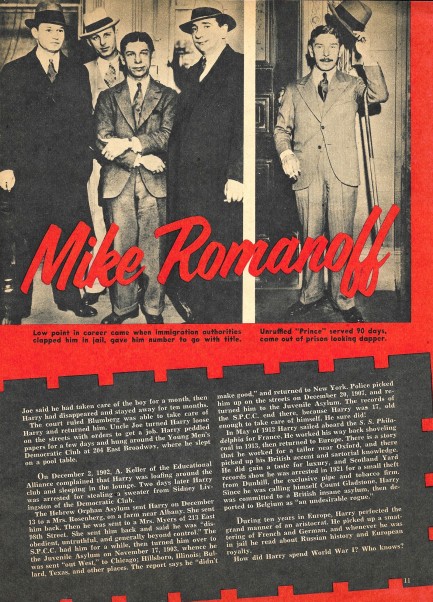
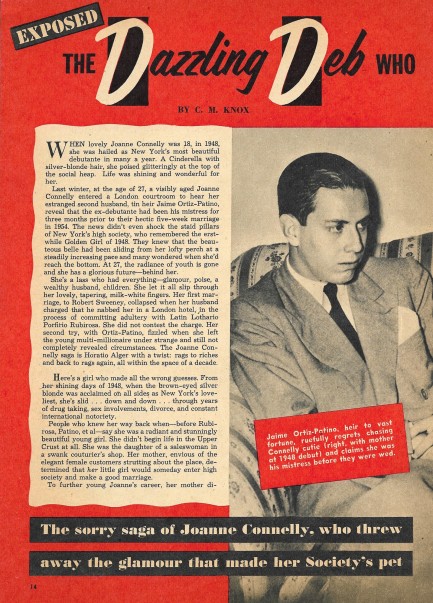
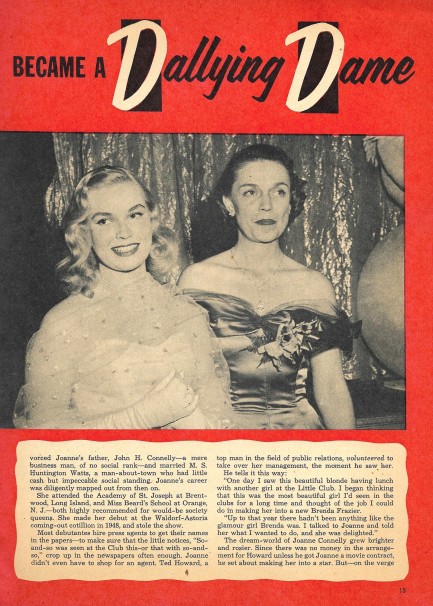
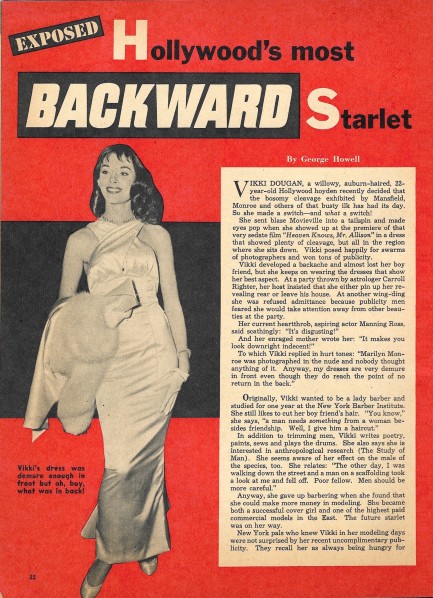
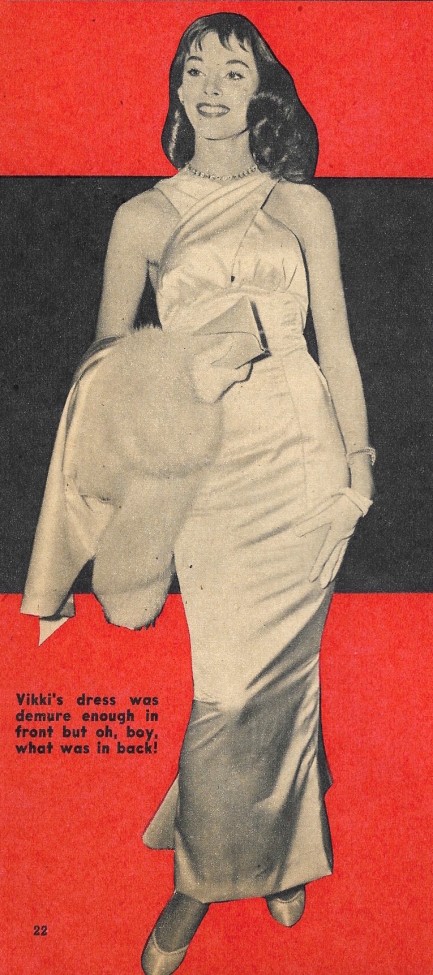
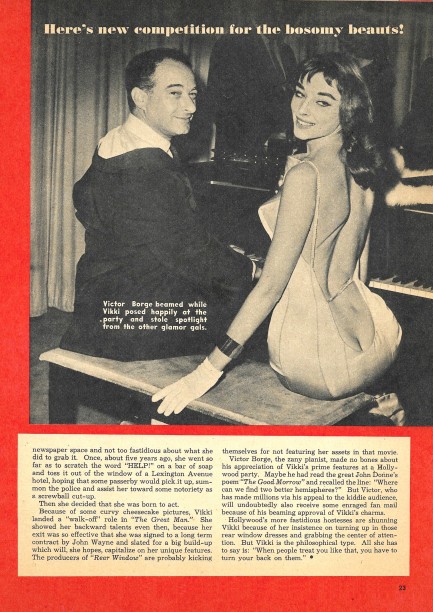
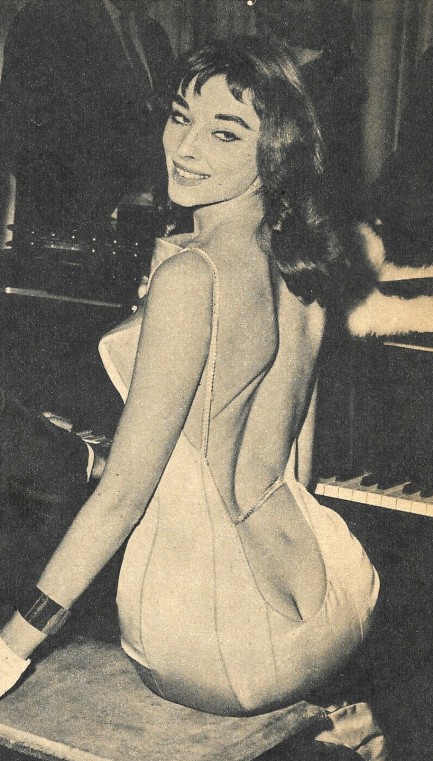

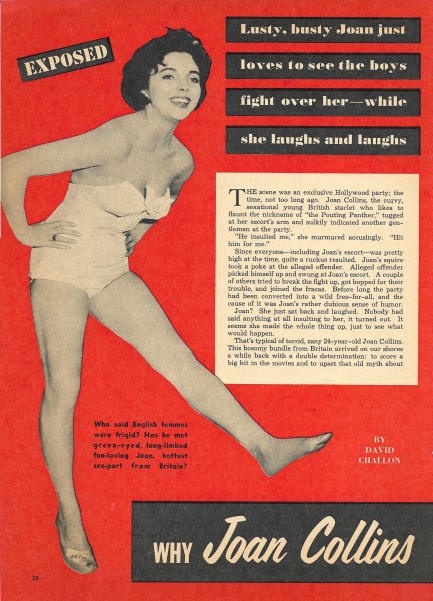
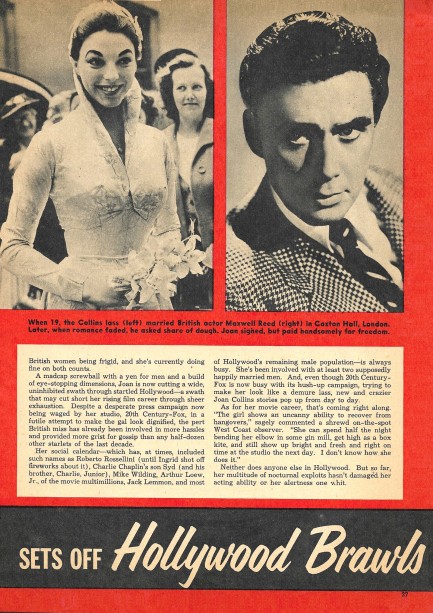
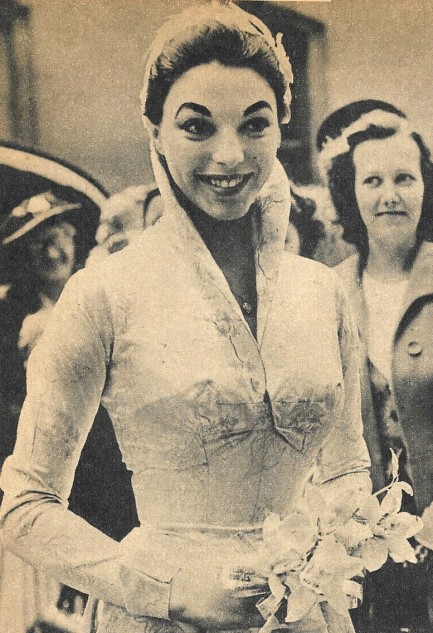
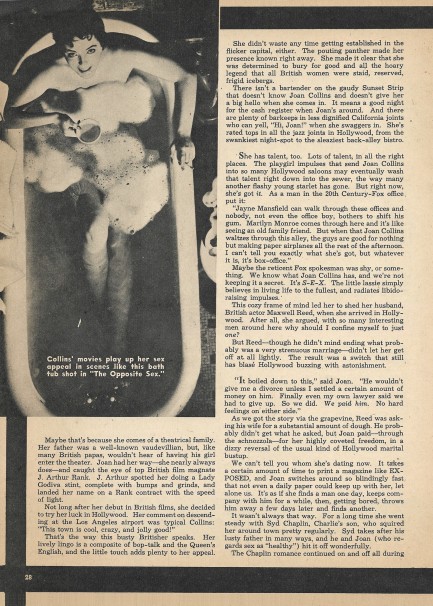
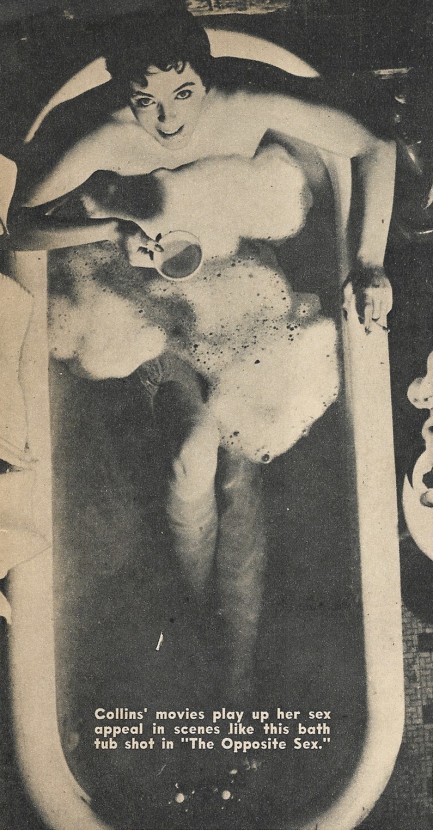
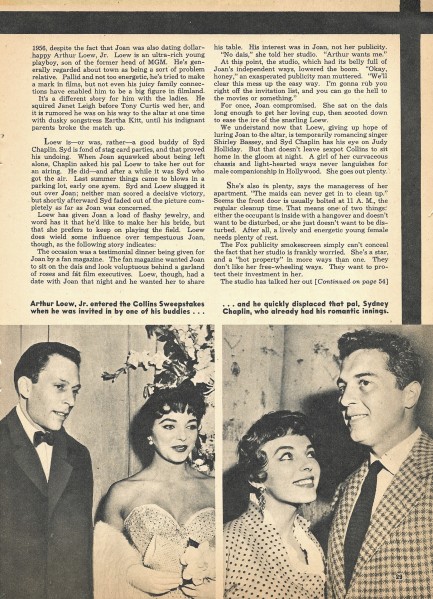
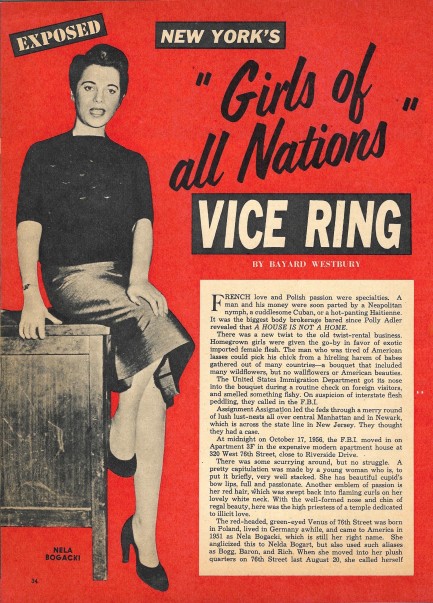
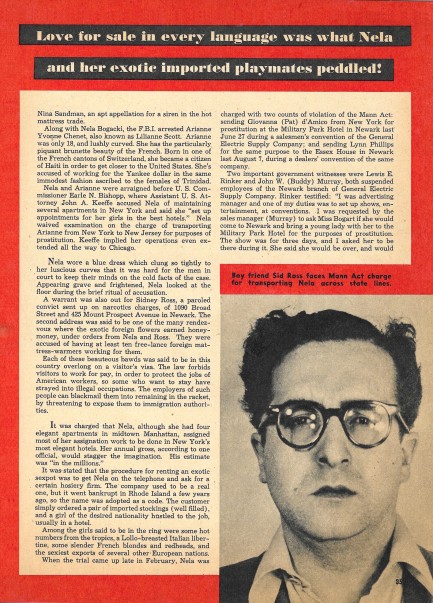
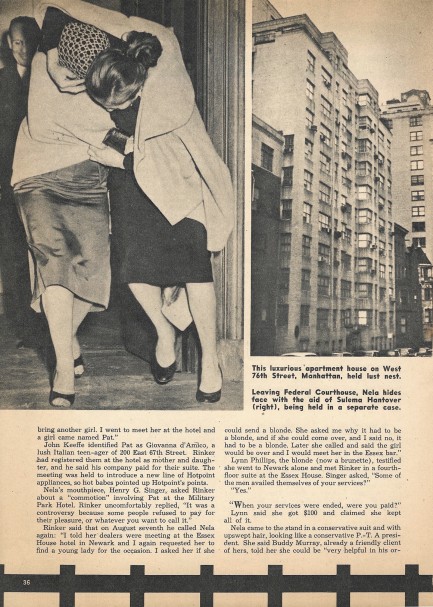
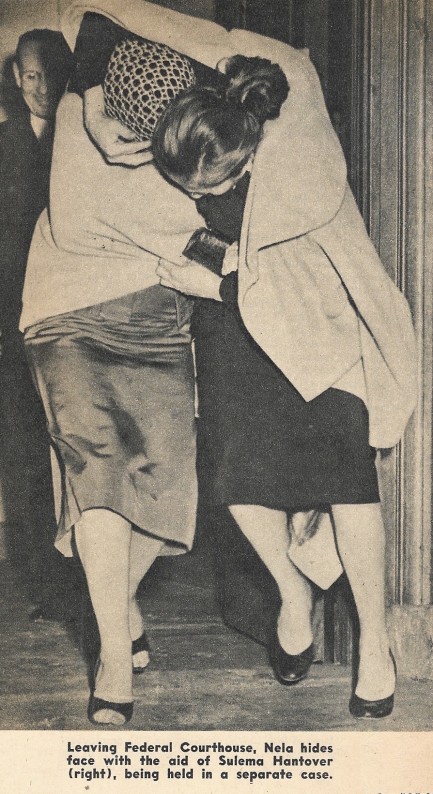
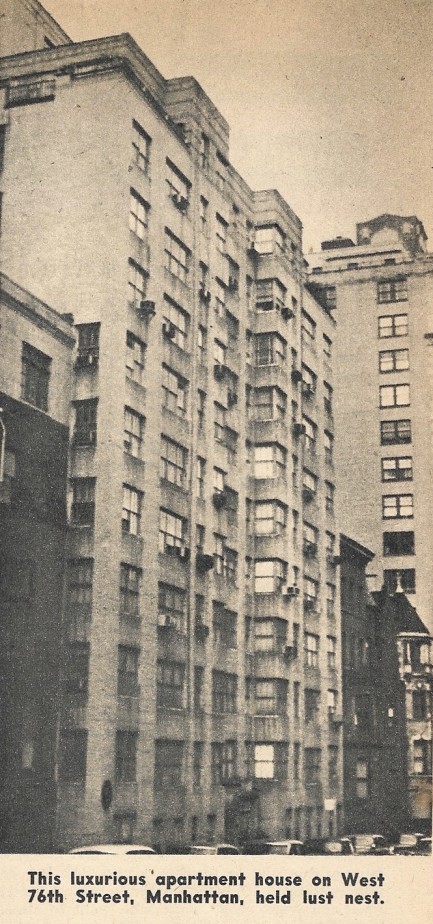
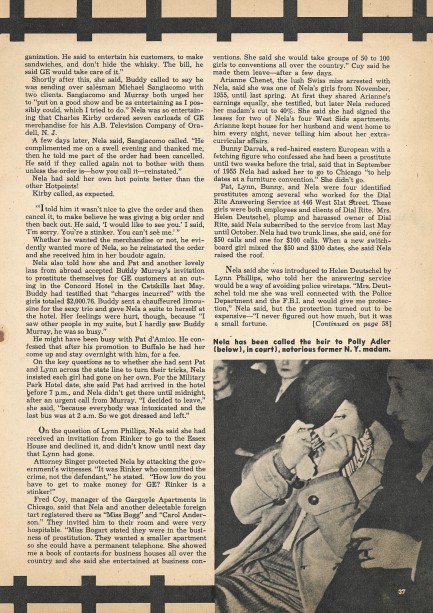
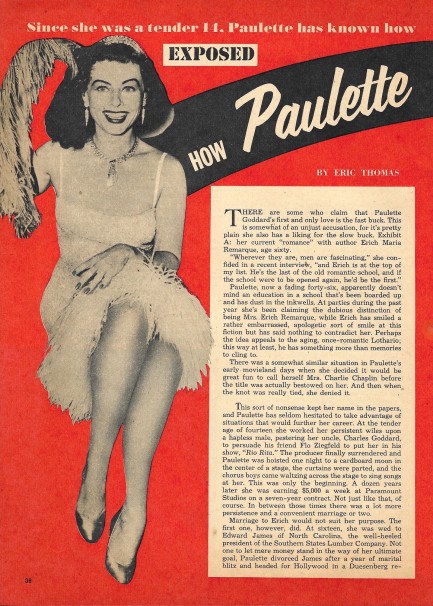
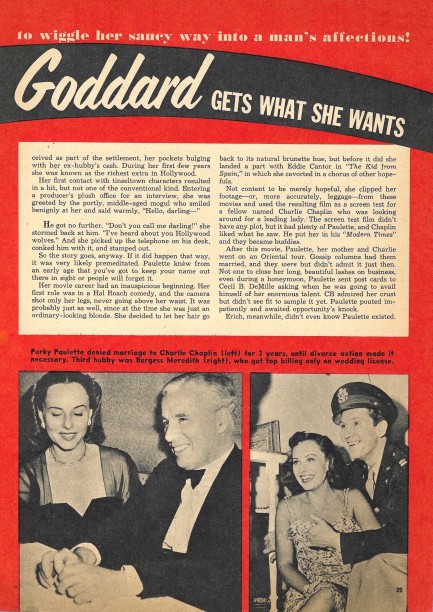

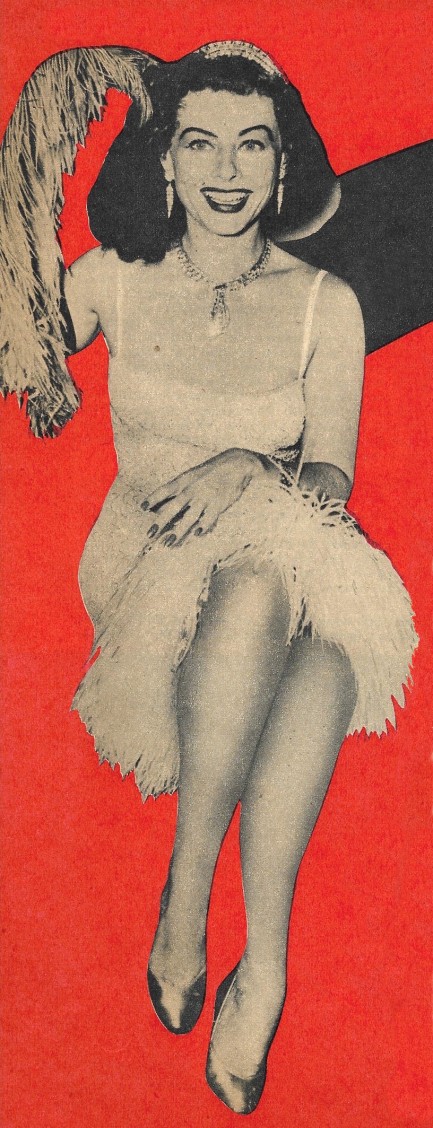
| Hollywoodland | Dec 13 2017 |

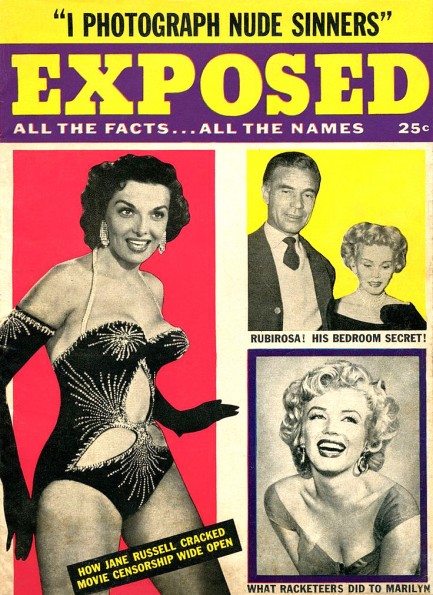
 and we seem to be correct. Judge for yourself at right. At least her boob punishment was offset by the fact that her outfit was too flimsy to include one of the deadly corsets that sometimes made their way around stars' waists.
and we seem to be correct. Judge for yourself at right. At least her boob punishment was offset by the fact that her outfit was too flimsy to include one of the deadly corsets that sometimes made their way around stars' waists.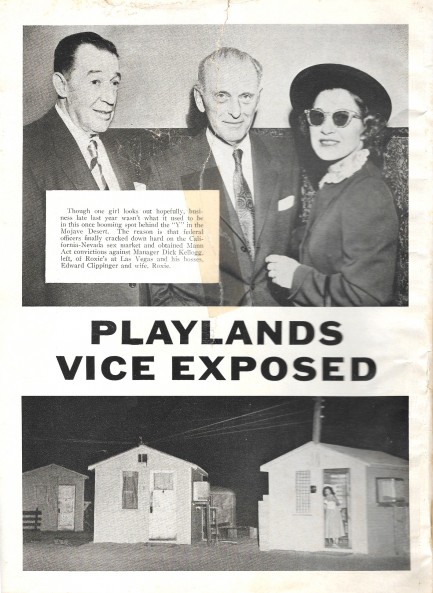
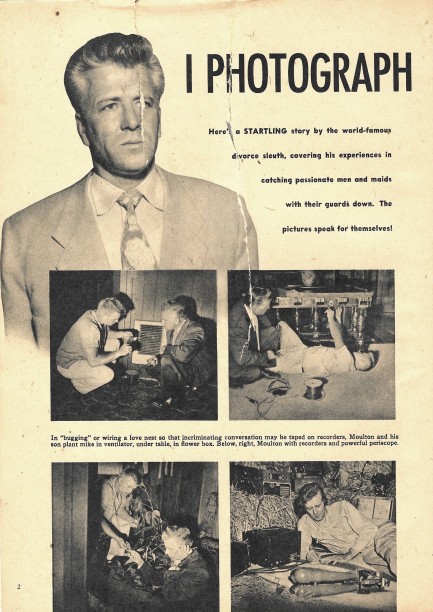
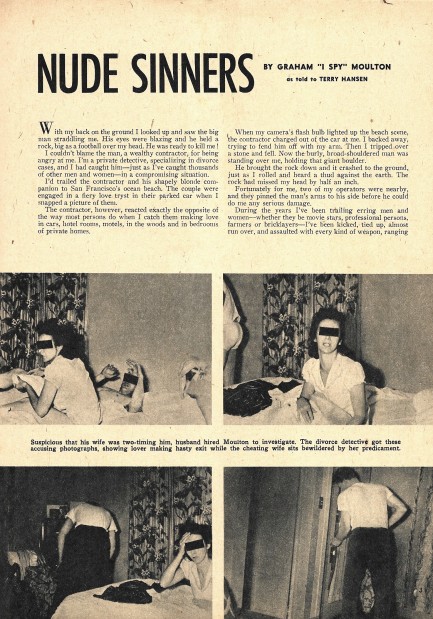
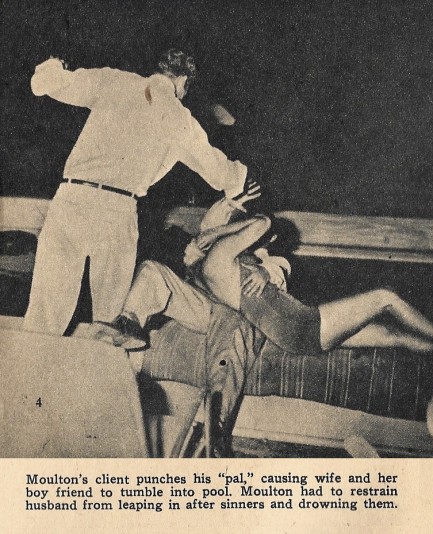
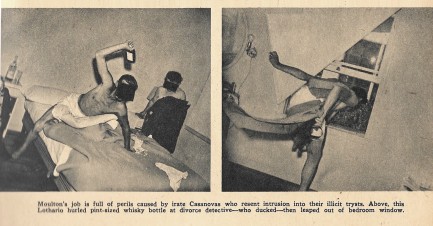
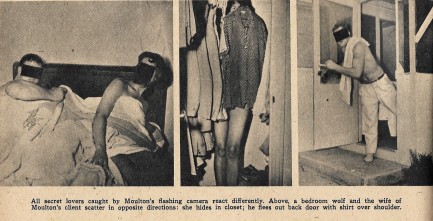
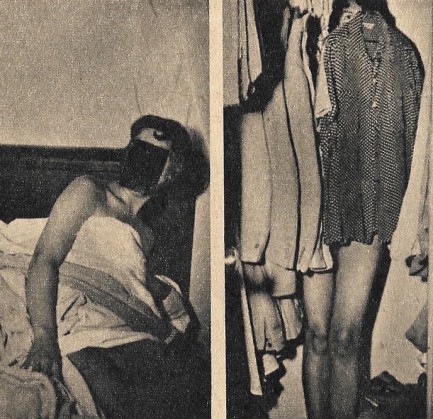
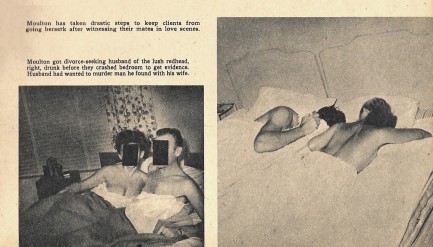
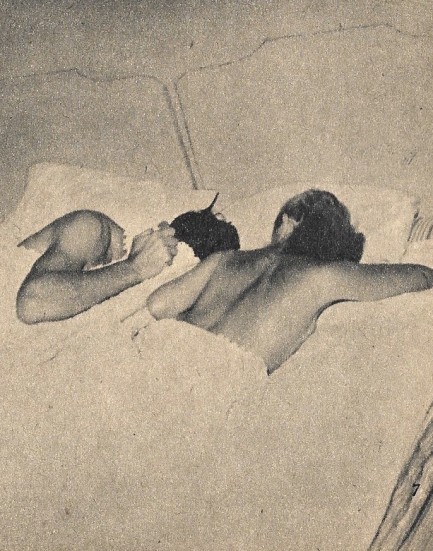
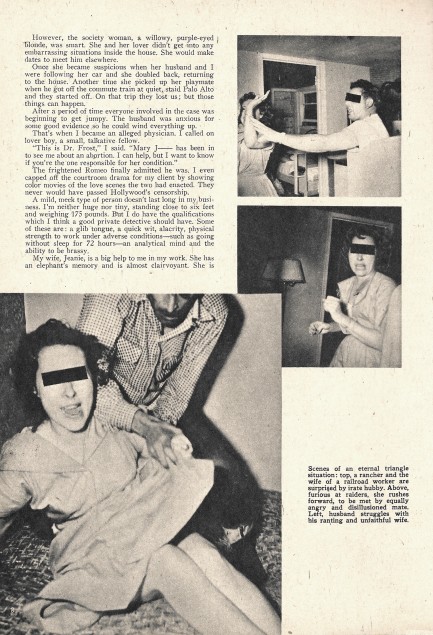
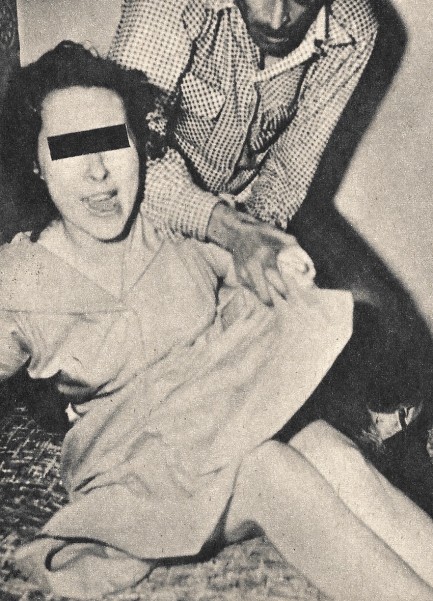

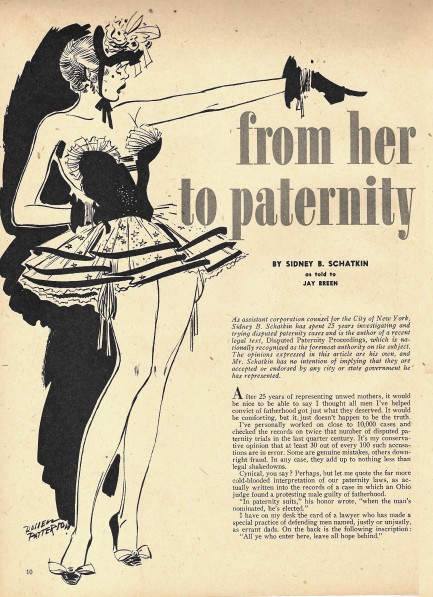
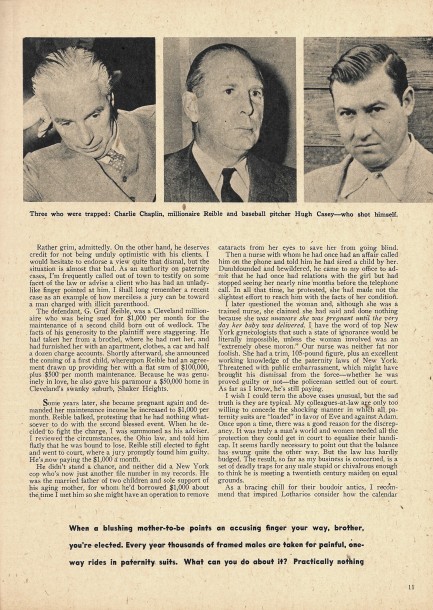
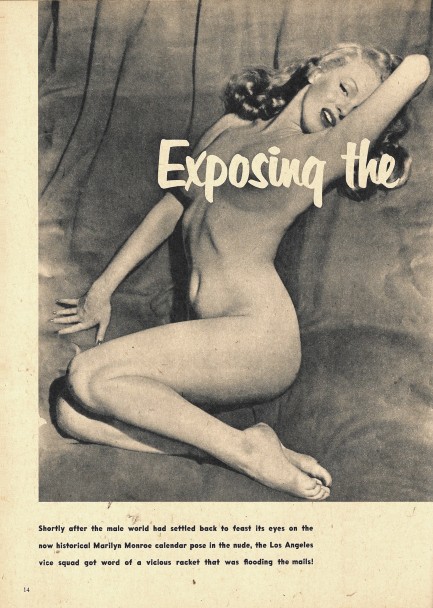
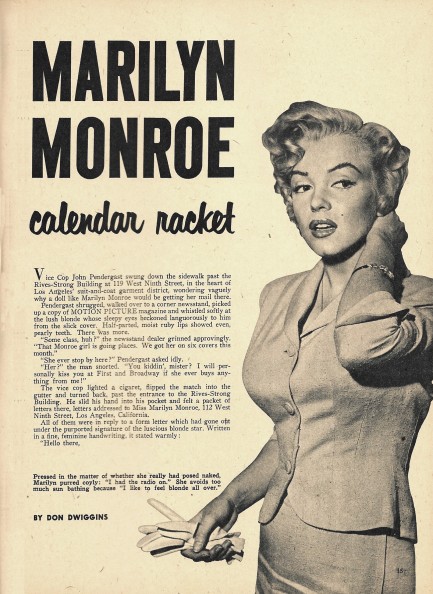
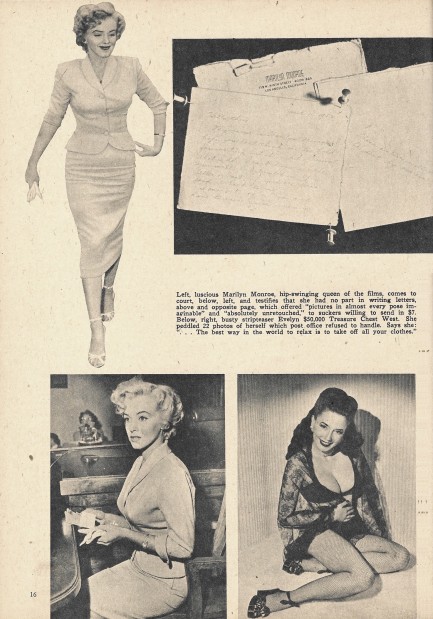
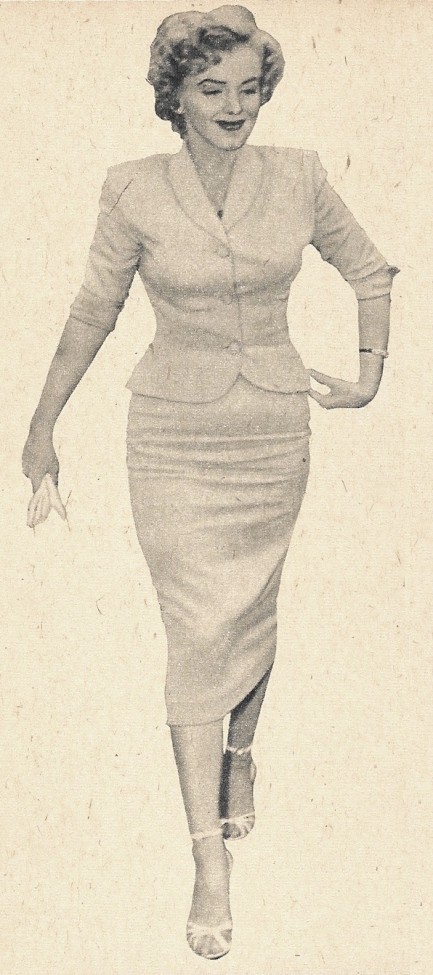
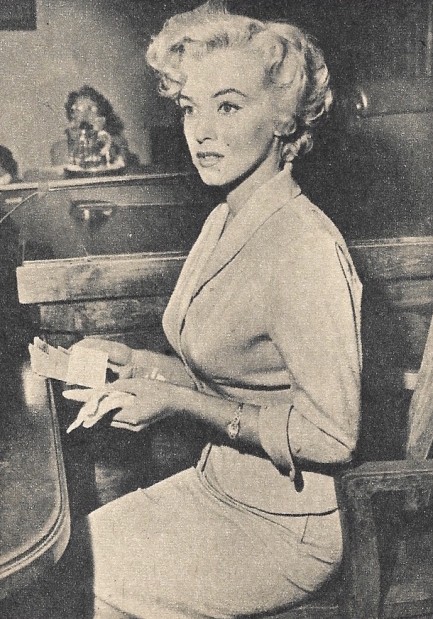
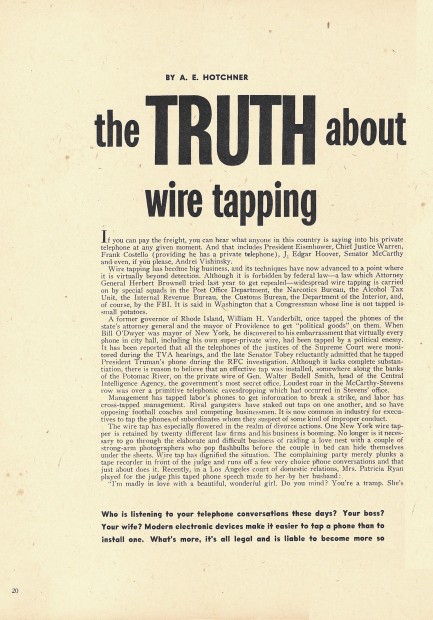
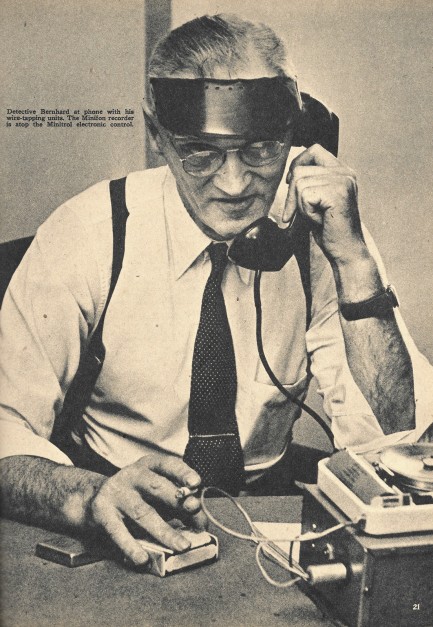
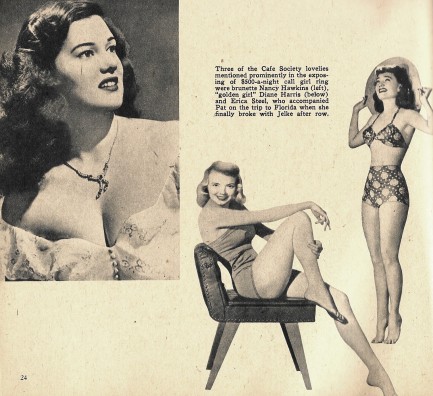
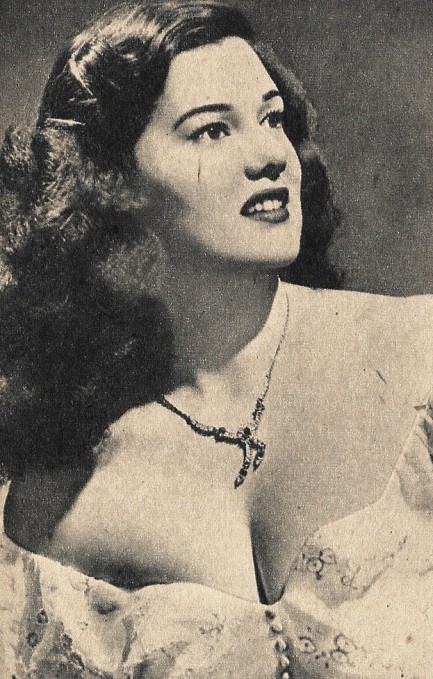
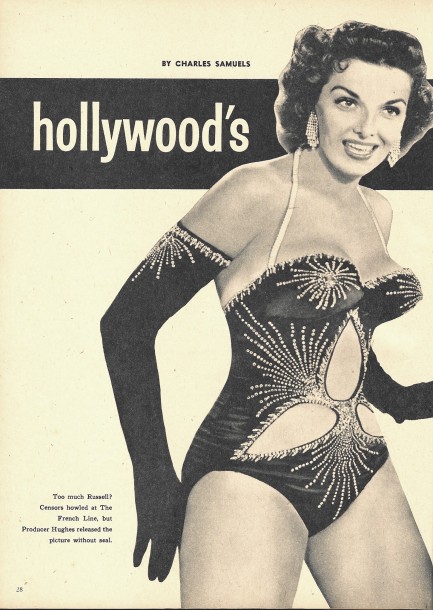
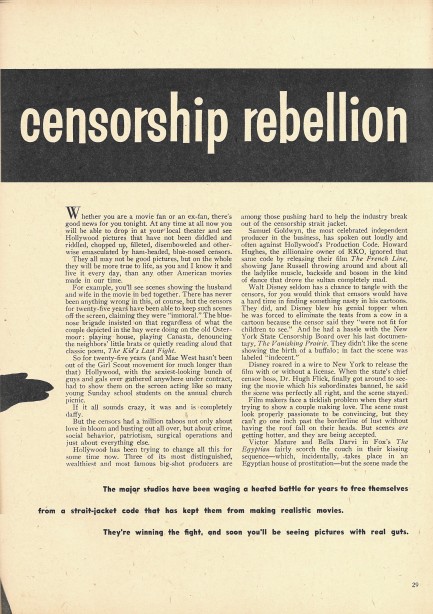
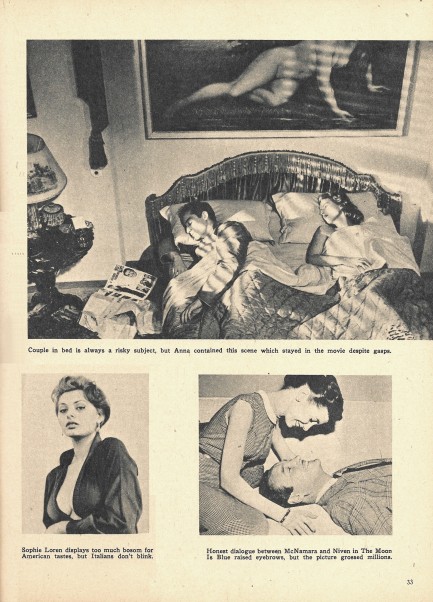
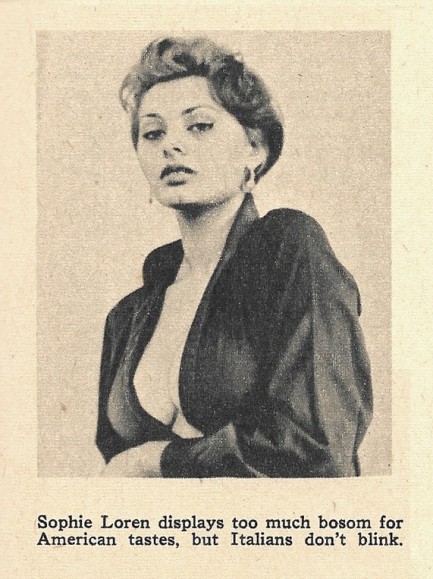
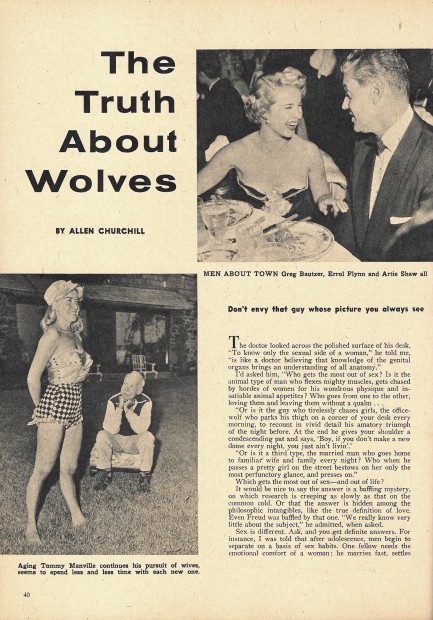
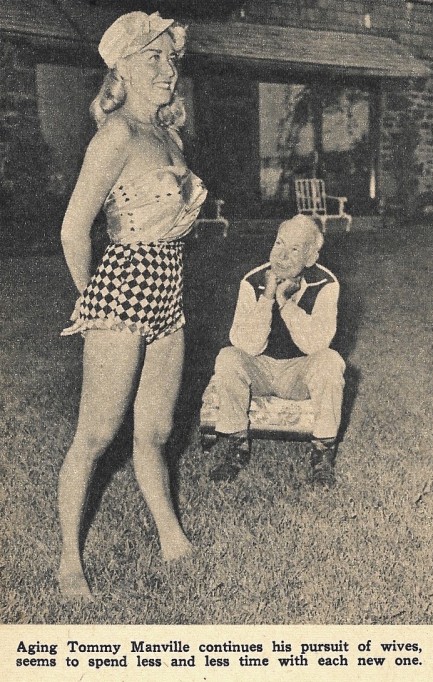
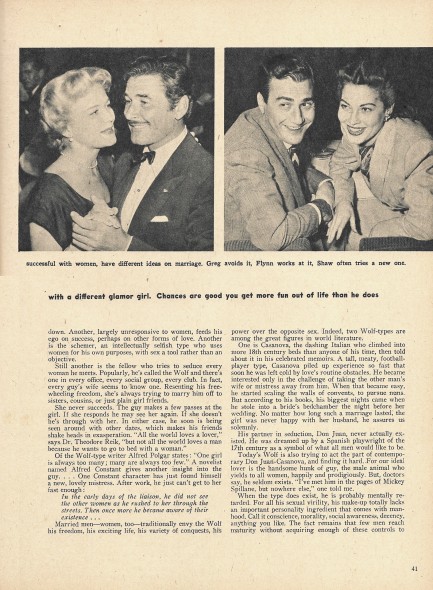
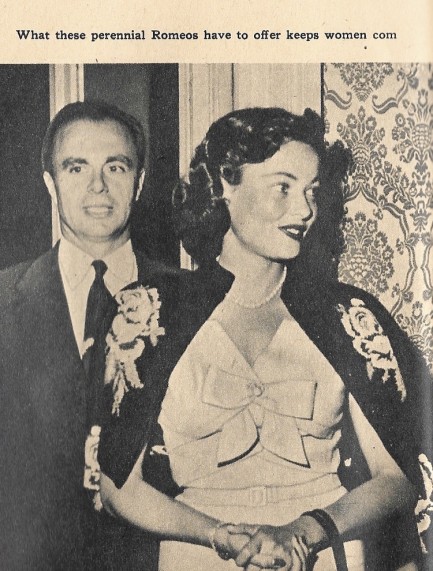
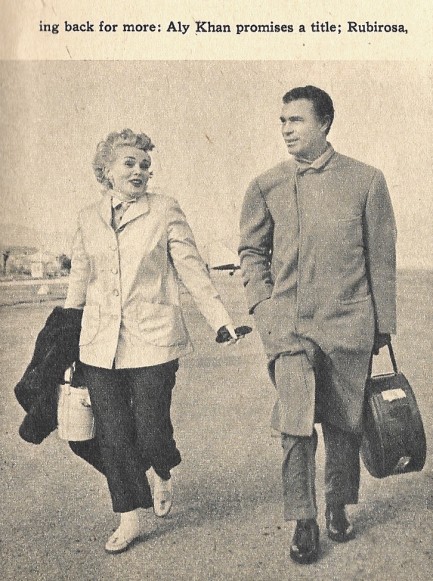
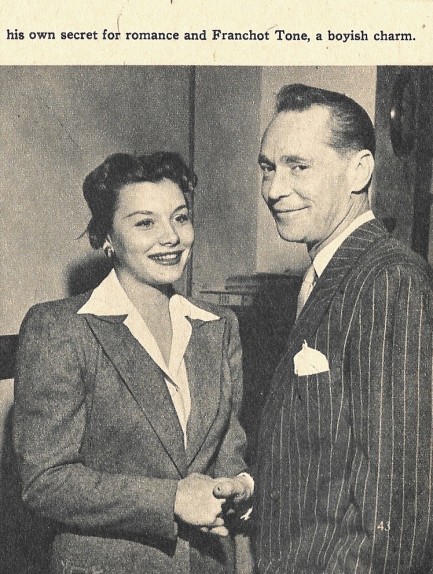
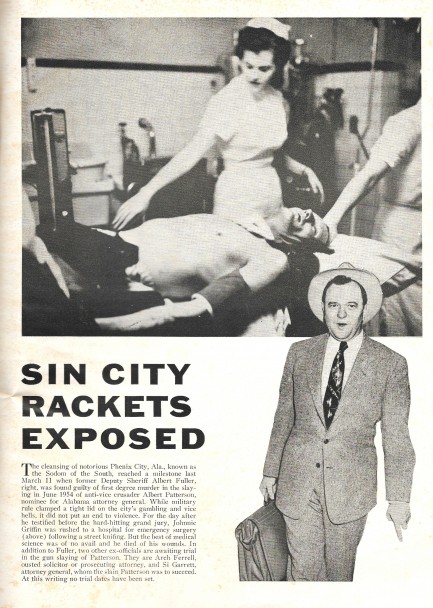
| Hollywoodland | Nov 12 2015 |

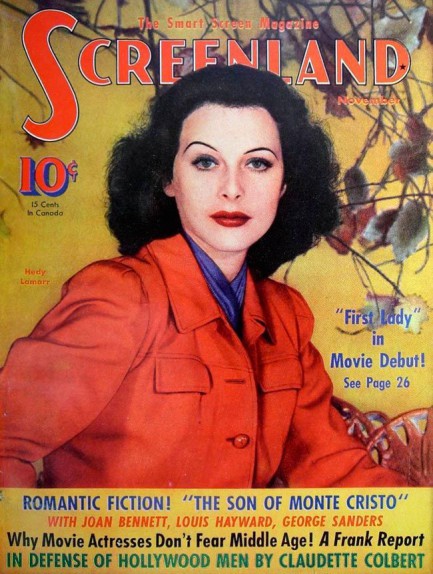
Above and below are assorted scans from an issue of Screenland published this month in 1940. The issue we posted previously was from 1923. In the intervening years contributor Delight Evans had become editor, and as a result had become one of Hollywood’s most powerful starmakers. Evans was uniquely talented and got her break when, as a fifteen-year-old, she had a story purchased by Photoplay. That was in 1915. By 1917 she was working for Photoplay in Chicago, and quickly ascended to an associate editor position there. At least one online source says she was an editor at Screenland by 1923, but even for someone that gifted twenty-three is a bit young to be helming one of America’s biggest magazines. We have an issue from December 1923 and it was Frederick James Smith in the corner office. But Evans was in charge by at least 1934, which we can confirm because we have an issue from that year too. When did she actually take the reins? No idea. This is where it would be nice to click over to a Wikipedia page or something, but she doesn’t have one. A trailblazer like this—can you believe it? But we shall dig. Evans needs some online exposure, so we’ll see what we can do. Twenty-one scans with a galaxy of stars below.
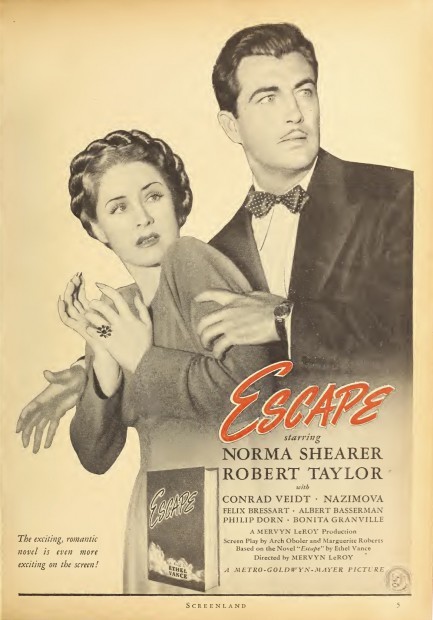
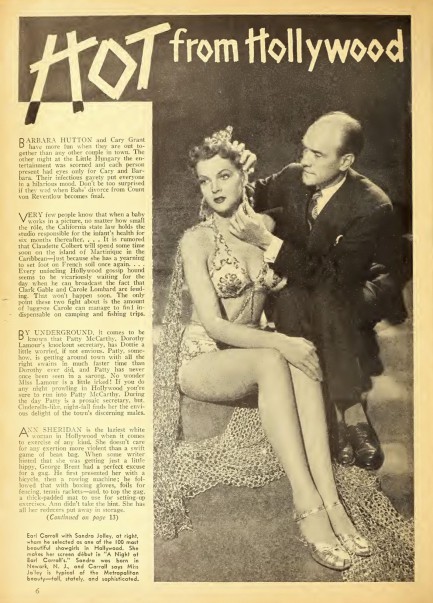
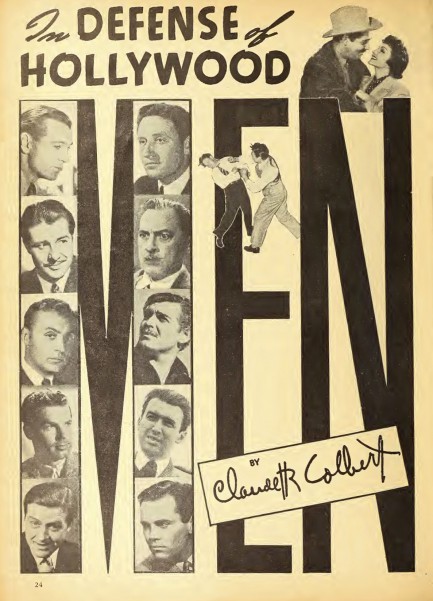
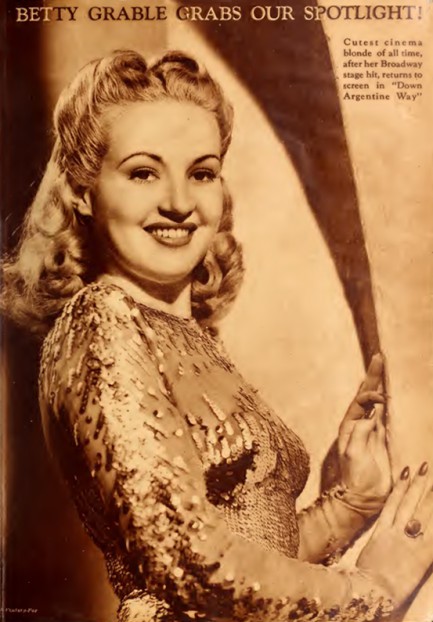
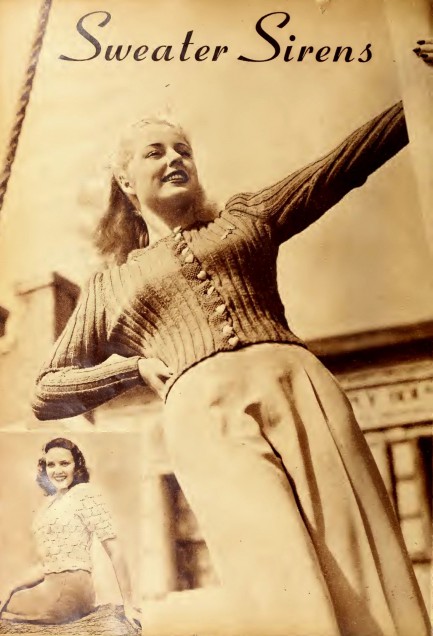
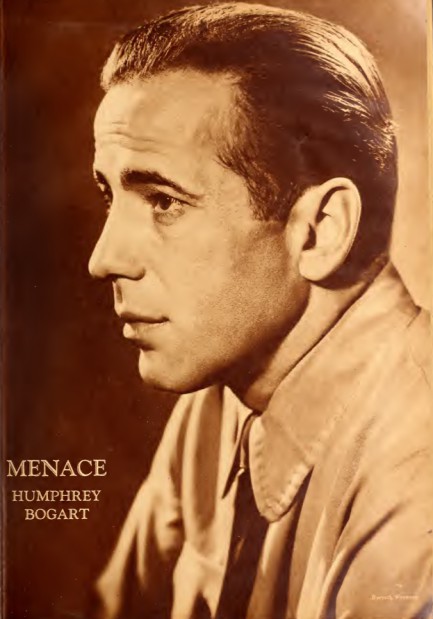
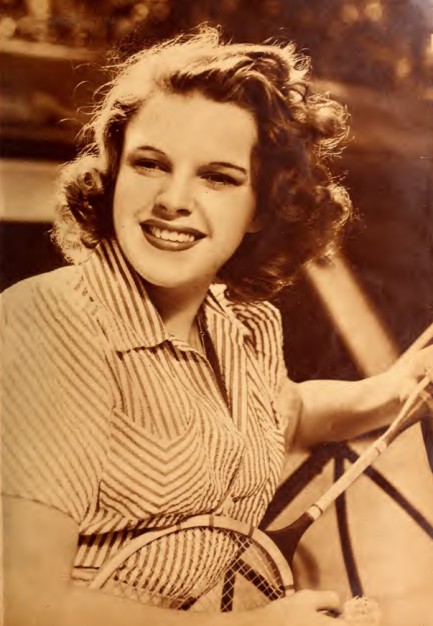
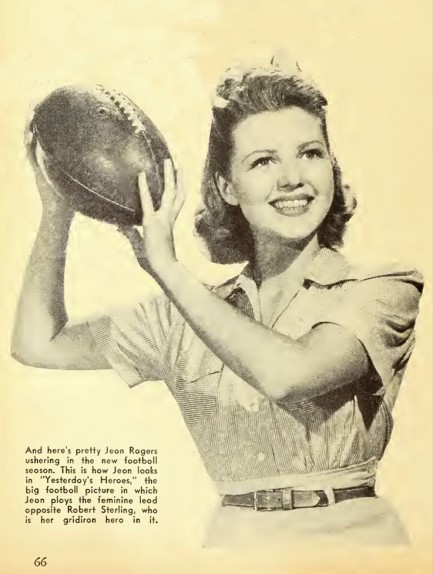
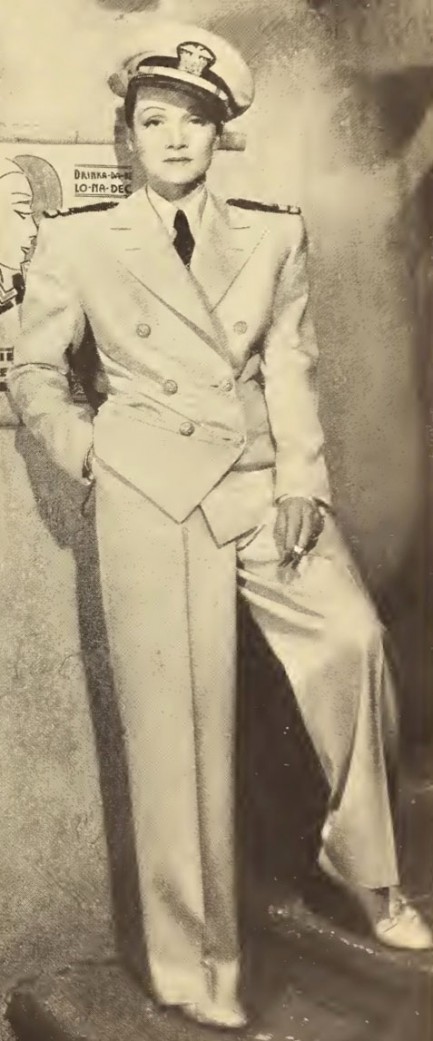
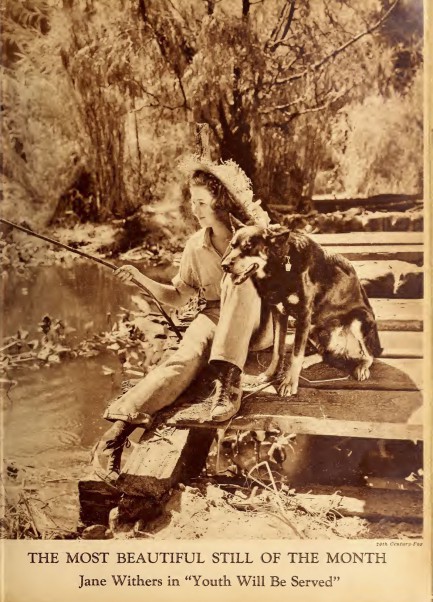
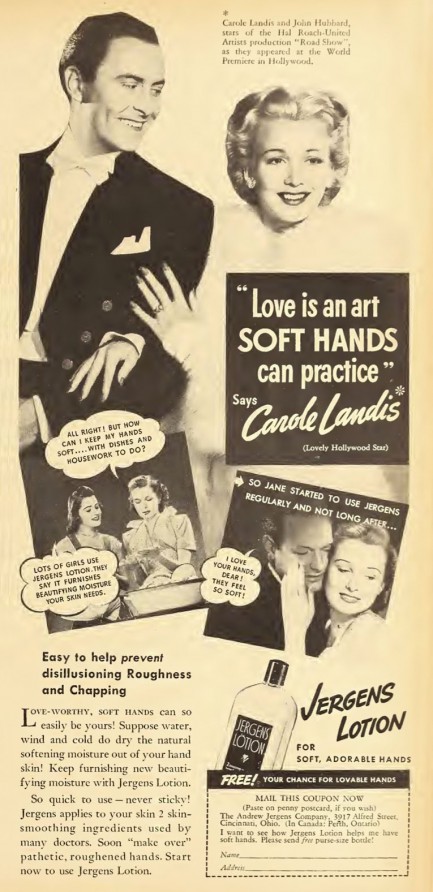
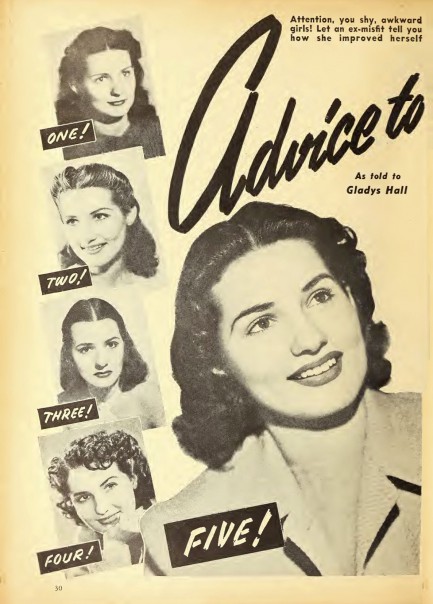
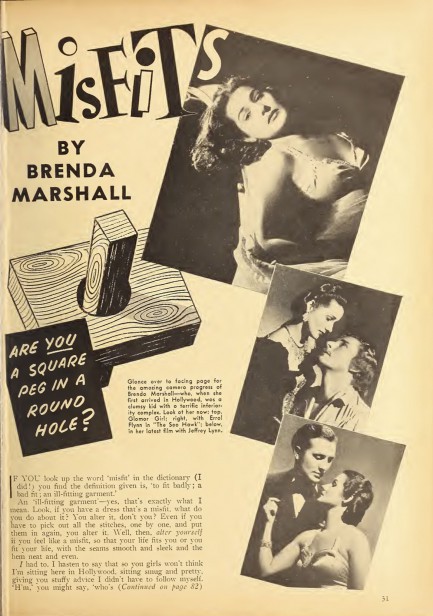
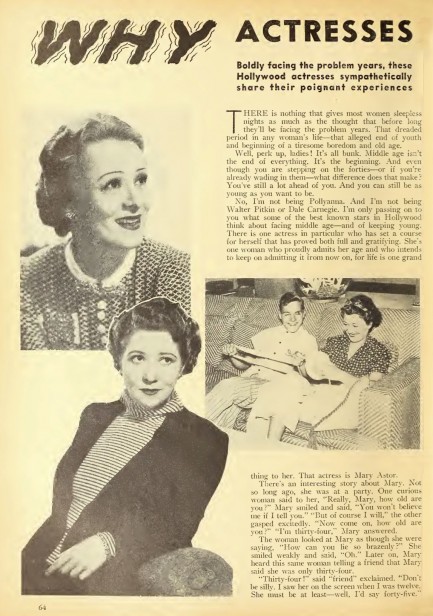
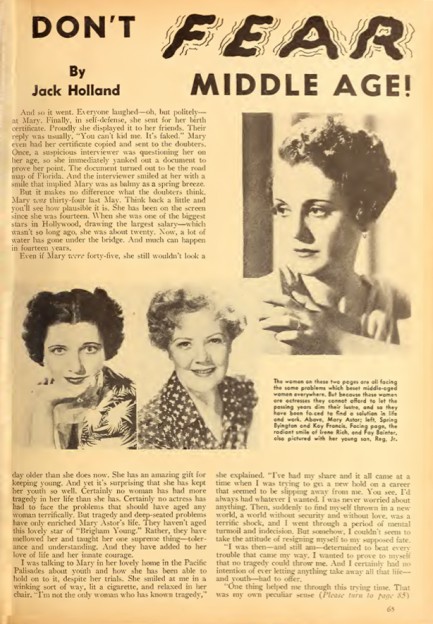
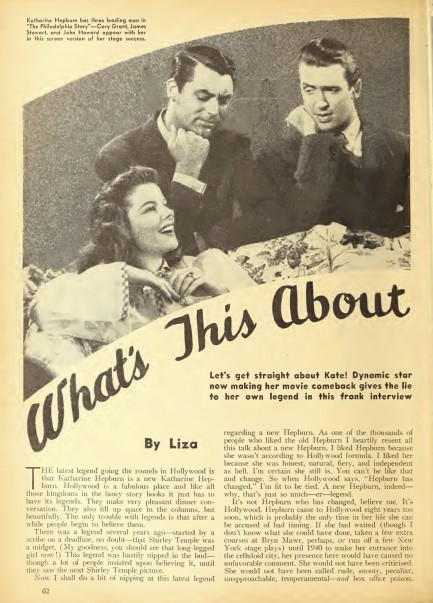
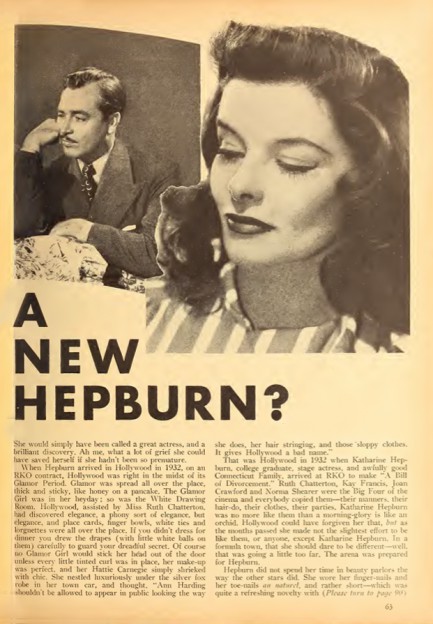
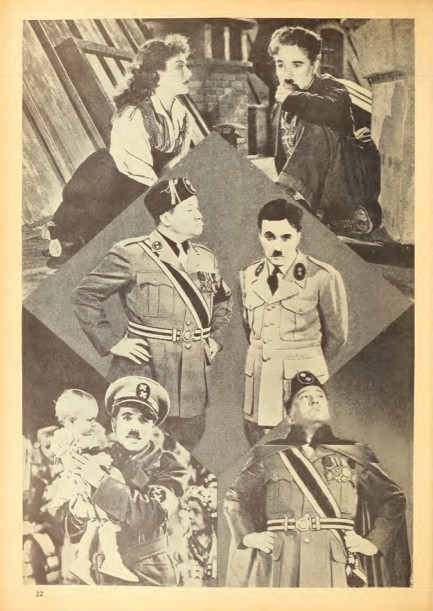
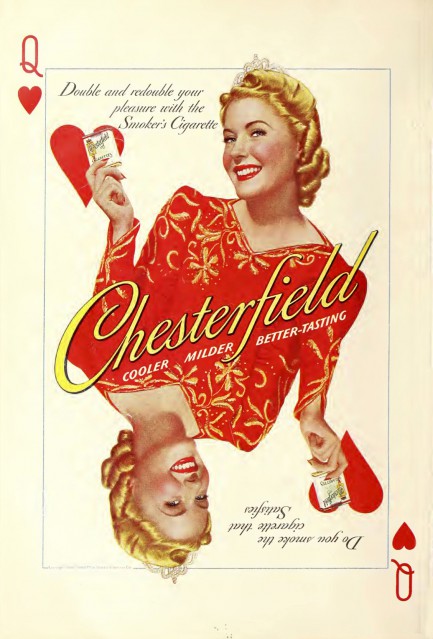
| Hollywoodland | Jun 19 2013 |

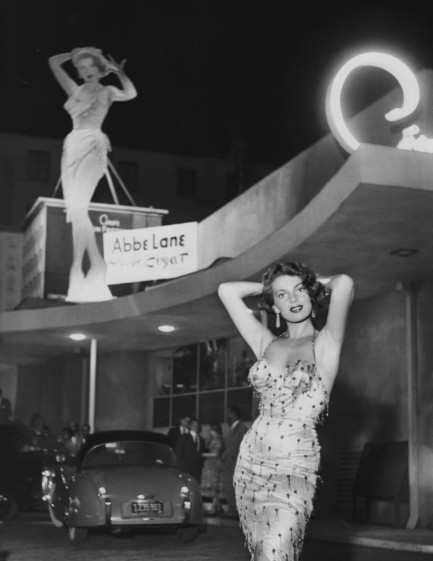
This photo made today in 1954 shows American singer/actress Abbe Lane posing outside Ciro’s nightclub in West Hollywood, California. Lane had begun in show business as a child actress, but became world famous after she married bandleader Xavier Cugat and began fronting his group as a singer. Although this is a famous photo, one you can find elsewhere on the internet, we thought it was worth posting anyway, not just because of Lane, but because supper clubs like Ciro’s really don’t exist anymore. Ciro’s, which by the way was unrelated to the many famous Ciro’s that existed in Europe during the Jazz Age, from its opening in 1940 to its closing in 1957 was a favorite spot of screen personalities, singers, producers, and writers, a place where the night’s meet-ups and trysts were reported in the next day’s gossip columns. Below you see Lane and Cugat, Charlie Chaplin with Paulette Goddard, Lane onstage fronting Cugat’s rumba band, Cary Grant with Betsy Drake, Lucille Ball with Desi Arnaz, Jr., and others.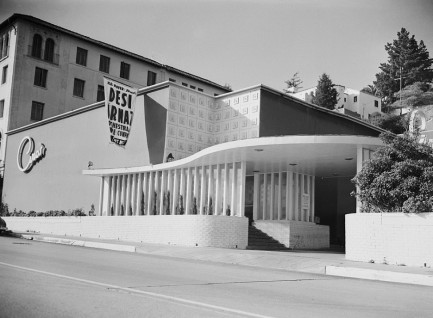
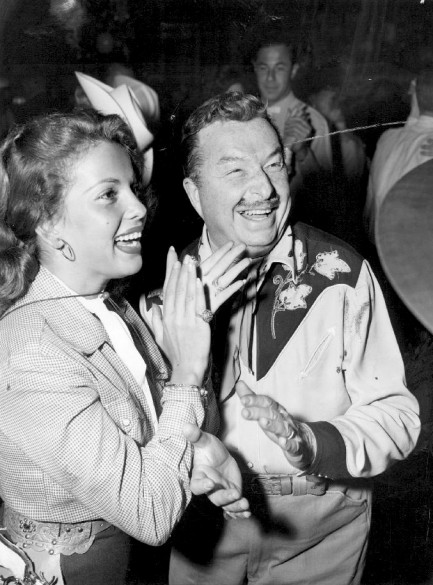
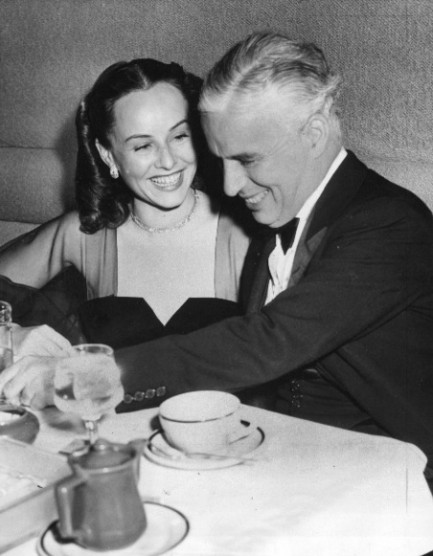
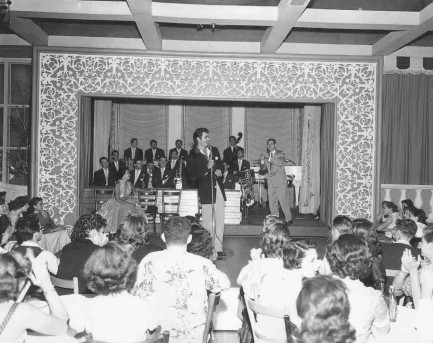
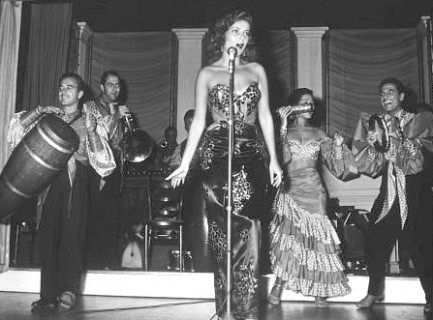
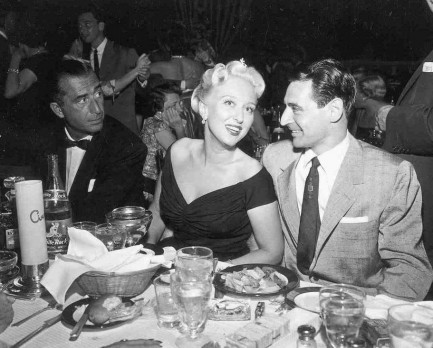
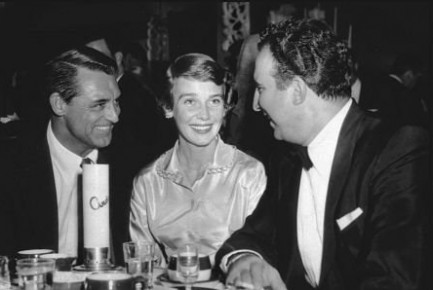
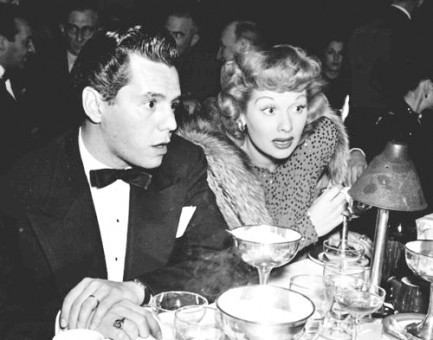
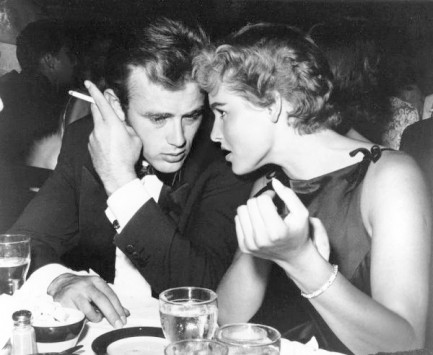
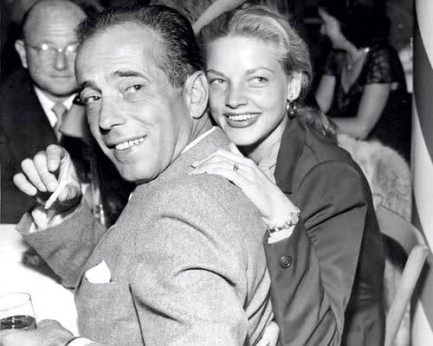
| Hollywoodland | May 27 2013 |

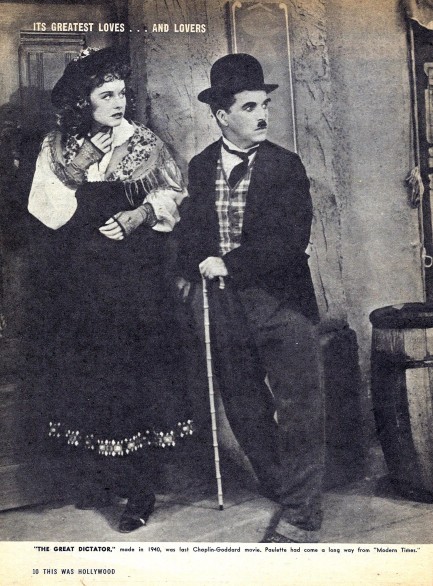
We scanned these photos from Sidney Skolsky’s This Was Hollywood, a magazine we began raiding for images a couple of months back and which was first published in 1955. The brief story here tells about Charlie Chaplin and Paulette Goddard’s relationship. This Was Hollywood makes it sounds like a fairy tale love, and that may be true—how many Western couples marry spontaneously while traveling in China? Unfortunately, after six years they were divorced in Mexico. But Goddard had lifted Chaplin out of a dark depression and helped refocus his creative energies at a time when he was so unsure of where his career stood that he was considering retiring and moving permanently to China. And of course their film collaborations are timeless. 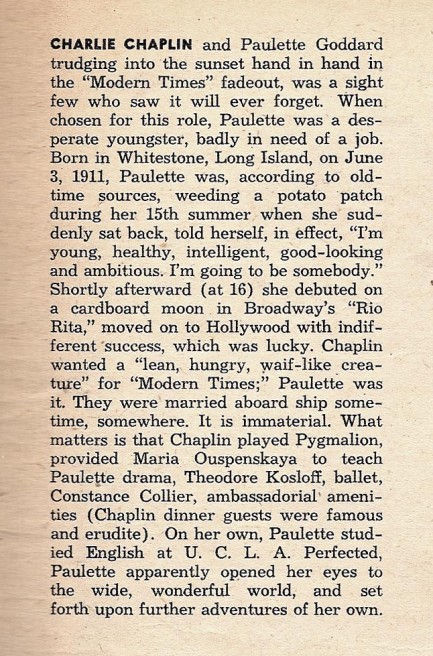
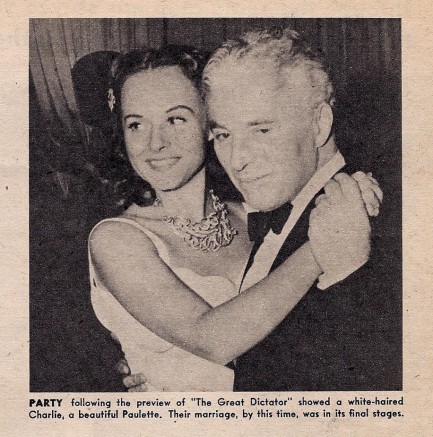
| Hollywoodland | Dec 13 2010 |

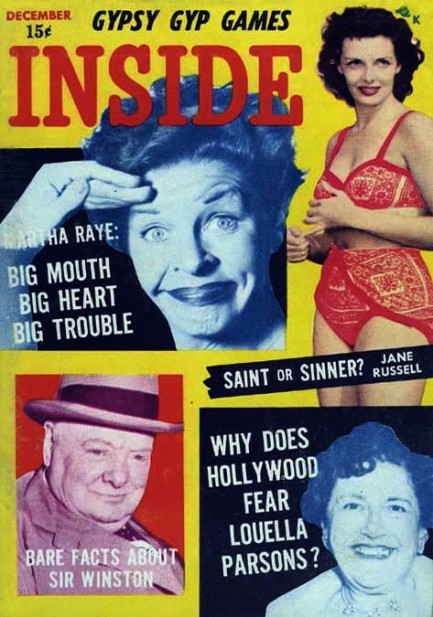
This December 1955 cover of Inside asks why Hollywood fears Louella Parsons. And the answer is because Parsons was at the time arguably the most important tastemaker in the world. Louella Parsons, née Luella Rose Oettinger, was the first person to write a true gossip column, beginning in 1914 when she worked for the Chicago Record Herald. Later, publisher William Randolph Hearst gave her a column in the Los Angeles Examiner that was eventually syndicated to 600 papers worldwide, which amounted to a readership of about twenty million people.
Parsons considered herself Hollywood’s moral watchdog and didn’t think twice about damaging the careers of celebrities she believed had behaved badly. She was also the gatekeeper of success for aspiring starlets—a few negative words in her column and a lifetime’s dream was shattered. The irony of all this self-righteousness is that she may have earned her column as a reward for helping cover up a killing.
The story goes that powerful publisher William Randolph Hearst either accidentally or intentionally shot producer Thomas Ince in the head while cruising with Ince, Hopper, and other guests on his 200-foot yacht the Oneida. While it’s impossible to say if this is true, it’s interesting that the guests on Hearst’s boat all had wildly different stories about what happened. Several, including Charlie Chaplin, denied ever being on the cruise, a claim that was contradicted by other guests. Hearst’s papers went the opposite route, reporting in unison that it was Ince who had never been on the boat. Instead, they claimed he died of a heart attack on Hearst’s ranch in San Simeon.
Later the story was revised—he had been on the boat, but had taken ill, left for Los Angeles by train, and died en route. By legal standards, it would be impossible to prove a cover-up took 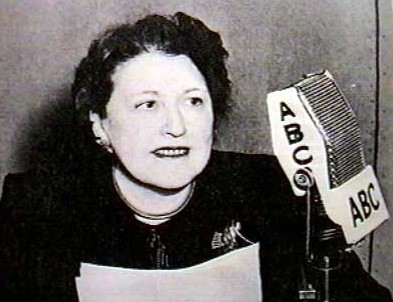 place. But by the lesser standards of plain logic, there’s no doubt that when a guy gets sick and has to leave a boat, people don’t fall over themselves making up conflicting stories about what happened.
place. But by the lesser standards of plain logic, there’s no doubt that when a guy gets sick and has to leave a boat, people don’t fall over themselves making up conflicting stories about what happened.
The aftermath of the incident was just as curious. Ince’s widow refused to allow an autopsy and had her husband immediately cremated. Hearst then set her up with a trust fund and she left for Europe, never to return. It was also around then that Hearst gave Parsons was a contract to be a columnist for his influential Examiner newspaper.
All these gifts were, at the very least, cases of extremely suspicious timing, but Ince’s death was never seriously investigated. A token police inquiry predictably turned up nothing, and all the lies were papered over. Louella Parsons didn’t squander her Devil’s bargain—if indeed that’s what it was. From her post at the Examiner she ruled Hollywood for thirty years, a moral arbiter who in all likelihood had a secret in her past that dwarfed any of those she revealed in her column.
| Hollywoodland | Jun 19 2009 |

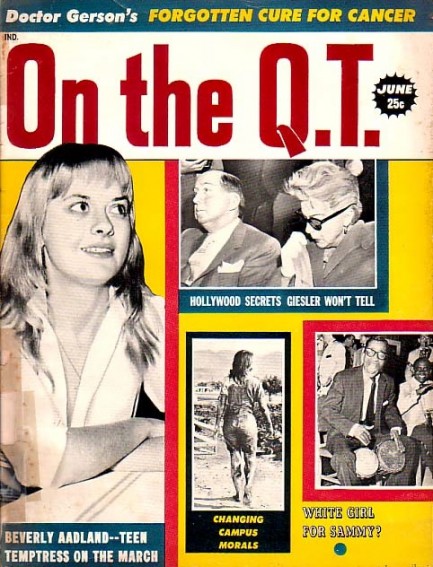
We have another issue of On the Q.T. today. The cover subject, Beverly Aadland, was a teenaged actress who earned notoriety for being Errol Flynn’s last lover. Flynn always preferred young girls—oftentimes too young, depending on whom you believe. When he wrote his disappointingly bland (at least to us) autobiography My Wicked, Wicked Ways, the dedication read: To a small companion. We would have guessed Flynn meant his cock, since it got him into so much trouble during his life, but more informed sources than us say the companion he meant was Beverly Aadland. We stand corrected, and she stands explained for those who didn’t know who she was.
Moving on, On the Q.T. also mentions a person named Giesler. This would be Jerry Giesler, who is little known now, but was once Tinseltown’s lawyer-to-the-stars. To say he possessed secrets is an understatement considering he represented the likes of Charlie Chaplin, 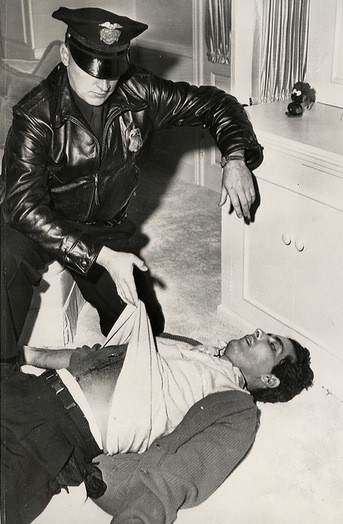 Edward G. Robinson, Marilyn Monroe, Shelley Winters, Lili St. Cyr, Busby Berkeley (from triple manslaughter charges), Zsa Zsa Gabor, Errol Flynn (again, with Flynn), and too many more to name. But of all his exploits, the most famous was his sensational defense of fourteen year-old Cheryl Crane from murder charges.
Edward G. Robinson, Marilyn Monroe, Shelley Winters, Lili St. Cyr, Busby Berkeley (from triple manslaughter charges), Zsa Zsa Gabor, Errol Flynn (again, with Flynn), and too many more to name. But of all his exploits, the most famous was his sensational defense of fourteen year-old Cheryl Crane from murder charges.
It’s one of the most lurid stories in Hollywood history. Crane was the daughter of megastar Lana Turner, and had endured many difficulties early in life, including alleged molestation and rape by Turner’s fourth husband, actor Lex Barker. Turner had an abusive situation of her own with mob enforcer Johnny Stompanato, a violent man who slapped her around but clung onto her for dear life no matter how hard she tried to dump him. On April 4, 1958, Cheryl Crane stabbed Stompanato to death. She claimed the mobster was beating her mother and she had no choice but to attack him. Not to be morbid, but oh to have been a fly on the wall as this fourteen year-old girl went Benihana on a feared mobster. What an astounding scene that must have been, especially to Stompanato, who you see in peaceful repose above. Anyway, Cheryl Crane said the stabbing was done in her mother's defense, and Jerry Giesler convinced a jury she was right.
Already famous enough to command what were at the time enormous retainers, Giesler's reputation was forever sealed after the Crane trial. He was simply the best, the go-to attorney for a celeb in a town that was always boiling with trouble. As a result of Giesler's exploits, Hollywood coined a catchphrase, a collection of magic words believed to possess the power to solve even the toughest problems. The phrase? "Get me Giesler."




































































